WE MAKE YOU THINK

THE LOST LAND OF ‘AINALANI
JUST DO IT! THE SELF-STARTERS
THE FRESH FACES OF FASHION





THE LOST LAND OF ‘AINALANI
JUST DO IT! THE SELF-STARTERS
THE FRESH FACES OF FASHION



“I’m not with my girlfriend anymore but we’ll always have our Chai Latte from Manifest.” — Scott Howard
“This is the best place to get coffee and free wifi” — Erin Hu
“I seriously met my future wife here!” — Kaleo Thomas
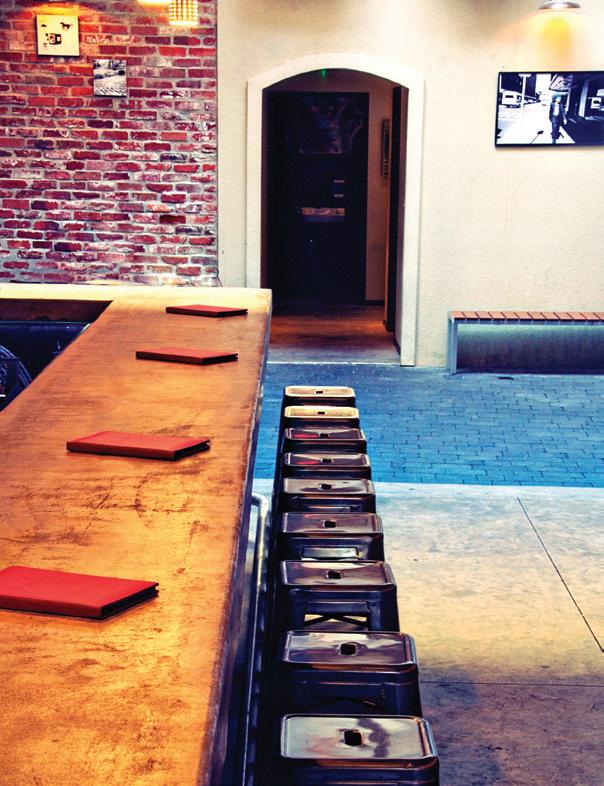
“An urban oasis awaits...”

MANIFEST
MONDAY THRU FRIDAY: 7AM - 2AM
SATURDAY: 8AM - 2AM
WWW.MANIFESTHAWAII.COM
TWIT TER: THEMANIFEST

“Imagine what you can get done in a day!”
WINTER 2010
TOC
40 IDENTITY CRISIS
BY SONNY GANADENA new collection of essays about hawai‘i asks the big questions. The value of hawai‘i ponders, how did we get here? A fishpond for a sugar farm for a golf course for a set of apartments?
What happens when our ‘aina, our land, looks no different than any other major metropolitan city? What would our landscape look like if we developed agriculture instead of industrial? These are the questions the wai‘anae community will wrestle with as developers push to rezone agricultural farmlands to make way for light industrial.
54
The 2009-2010 school year had 17 fewer school days than originally scheduled, giving hawai‘i the fewest number of instructional days in the nation. A small group of education activists took the hard line and became the moral compass for a wayward system.
62 CO-OPERATION MAKES IT HAPPEN
BY MARGOT SEETOThe idea of communal living, the co-op, is a fairly new phenomenon exploding all over big cities, like san francisco and new york. This idea, however, is nothing new, as perpetuated by the ancient hawaiian system of the ahupua‘a. So how then, do we move into the future? Maybe it’s by looking to the past.
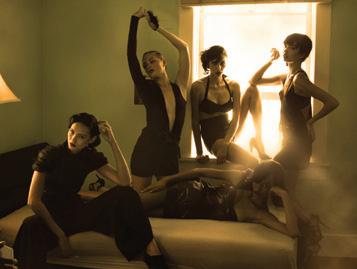
The days of whining about the lack of opportunity in hawai‘i are over. A new set of young progressives take their future into their own hands, pursuing the things they are passionate about, taking a leap of faith, and launching their ideas into action. Learn what it takes to be an entrepreneur from guys from bamp projects, darieus legg (writer/director/editor, ecila the movie), brandon reid (owner, the manifest) and tiffany tanaka (owner, fresh café)
PHOTOGRAPHY BY HAROLD JULIAN
More than rubbah slippahs and tank tops, hawai‘i designers are showing how much we-kea about fashion. Making up in design and innovation what we lack in available fabric, our local designers are showing the world how their cross-cultural backgrounds influence their unique points of views.
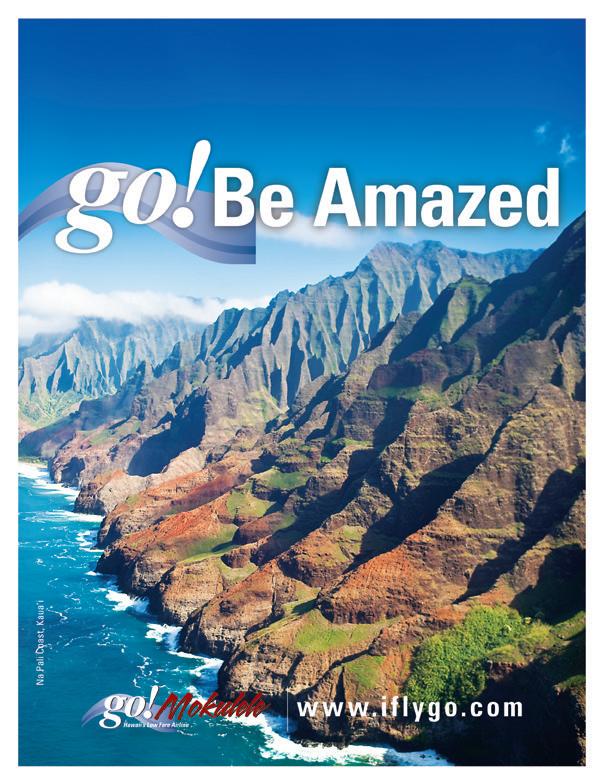
To find out more about Hawai‘i’s most innovative, up-and-coming local designers, visit our website.
Our entrepreneurial set had loads more to say, great stories to tell and plenty of useful information to dole out. To view the complete interview with the guys from BAMP Projects, Darieus Legg (writer/director/ editor, ECILA the movie), Brandon Reid (owner, The Manifest) and Tiffany Tanaka (owner, Fresh Café)
visit www.FLUXhawaii.com.
EVERYBODY WANTS SOME
By Jon Letman“Is Hawai‘i for people who live here or for the tourist industry, the military, GMO ag, and all the other interests that are preying and sucking value out of it? Or as they would say, ‘adding value’?” questions Ikaika Hussey, publisher of The Hawaii Independent, a locally-owned, online news service.
Defined by the precious points of land that rise from the central Pacific like a string of sparkling green gems, Hawai‘i is elevated – exalted even – as a paradise on earth. At times Hawai‘i seems like a starlet that everybody wants a piece of – agribusiness, water, land and energy developers, the tourist industry, Hollywood, the military…
A 2005-2006 newcomer’s guide, “Living in Paradise,” published by The Honolulu Advertiser gushed, “When you mention the Hawaiian islands to people around the world, they sigh and get a dreamy look in their eyes. Mesmerizing visions of paradise spring to mind.”
Clearly Hawai‘i is a hot commodity. Or is it?
Professor Chip Fletcher of the University of Hawai‘i Department of Geology and Geophysics says: “Let’s be sure that if we think of Hawai‘i as a commodity, that it’s only one thread in the tapestry that guides our overall actions. I tend to think of Hawai‘i as a place that is severely damaged and in need of extraordinary care and management.”
TO FIND OUT MORE ABOUT THE COMMODIFICATION OF HAWAI‘I VISIT: WWW. FLUXHAWAII.COM.
Driving down Ala Moana Boulevard, it can be easy to get blinded by the sea of red brake lights flashing in front of you. It’s easy to get caught up in what’s happening in front of us – the bastard who just cut you off, the neverending road work to fill in potholes, rubbernecking at the idiot pulled over by police (Ha! Sucker.) – and forget that which is all around us. That between the trees at Ala Moana Beach Park, behind the homeless shopping carts and tents, is a body of water that stretches as far as the eye can see. Sometimes you’ll see white peaks firing at Big Rights. In the winter, or on weekends, the drive up Kamehameha Highway up to the North Shore is just as frustrating.
When inherent beauty is a part of our everyday lives, it becomes just that, everyday and mundane. When we are surrounded by water on every side, it becomes easy to forget that this natural resource is precious, something not to be used and abused. With the theme of “Water,” our goal was to put water under a microscope, to document issues prevalent not just in our city, but as experienced by surrounding cultures as well. To help us remember that water and beaches are not to be taken for granted and that our inputs have a direct effect on the quality of the water that we drink and play in. So with that we very proudly bring you our second issue. After having a year to produce our first, these past three months have whizzed by. But phew! We made it. Especially with the closing down of publications and the consolidation of local media, we do hope to cultivate discussion and create an environment that fosters creativity and collaboration among all mediums.
Enjoy.
 Lisa Yamada Publisher/Editor
Lisa Yamada Publisher/Editor
FALL 2010
Editor / Publisher Lisa Yamada
Creative Director Ara Laylo
Editorial Assistant Candice Nonaka
Intern Joel Gaspar
Gloria Baraquio
Jason Cutinella
Lee Chan
GRLFRNDS
Tiffany Hervey
Joshua Masayoshi Huff
Mitchell Kuga
Deanne Matsushima
Carolyn Mirante
Bridget Mullen
Anthony V. Ramil
Sabrina Velazquez
Tiffanie Wen
Jared Yamanuha
Aaron Yoshino
PHOTO
Matthew Alvarado
Christy Eriksson
Willy Branlund
Tiffany Hervey
Harold Julian
Life Without Limbs
Miles Marshall
Deanne Matsushima
Michael McDermott
Aña Monique
Harper Smith
Maika‘i Tubbs
Scott Yoell
Surfing The Nations
Aaron Yoshino
ILLUSTRATIONS
Jennifer Yoko Thorbjornsen
CREATIVE
Ryan Camacho Almond Cruz Dulce Felipe
MULTIMEDIA
Sheryle Ishimoto
Matthew McVickar
ADVERTISING
Scott Hager
Sandy Ng advertising@FLUXhawaii.com
FLUX Hawaii, 2815 Kaihikapu Street, Honolulu, HI 96819. Contents of FLUX Hawaii are protected by copyright and may not be reproduced without the expressed written consent of the publisher. FLUX Hawaii accepts no responsibility for unsolicited manuscripts and/or photographs and assumes no liability for products or services advertised herein. FLUX Hawaii reserves the right to edit, rewrite, refuse or reuse material, is not responsible for errors and omissions and may feature same on fluxhawaii.com, as well as other mediums for any and all purposes.
FLUX Hawaii is a quarterly lifestyle publication.

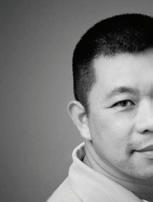
MIKE ANG
I value … Having spontaneous consideration for others.
Before I die, I’d like to visit:
The Maldives. After that, please encase me in an airtight glass tomb and allow me to descend to the bottom of the Diamantina Trench, 26,000 feet deep in the Indian Ocean. Who is the most influential person in your life?
My architecture design studio professor, Russell A. Smith. He introduced me to the development of creative thought processes. What talent would you most like to have? The talent for languages. It would help me understand and appreciate the world better and the world would understand me, too. What physical feature would you change about yourself?
To have perfect eyesight until I die! The biggest threat to a more sustainable Hawai‘i is:
When people fear losing their inherently fragile sense of self-importance. “Self” above “community,” and the perpetuation of Western self-culture is the ultimate threat not just to Hawai‘i but to the whole world as well.
Mike is always looking for ways to expand his creative thought processes. Actually an architect by trade, and with a master’s degree in information systems, Mike brings a technical and analytical skill to his photography. In between traveling and eating some of the world’s spiciest foods, and on his way to obtaining yet another degree in multi-media, Mike went in the kitchen to shoot Lu Lu’s upand-coming chefs (page ___) and to Japan to show us just how good Tokyo eating is (page ___).

JOHN HOOK
I value … Value meals.
If you could photograph anyone, who would it be?
I’d love to shoot my favorite band, The Vandals. I imagine using stuff like water wings, piles of dried cow shit, feathers, mustaches, miniature animals, roller skates, fat children, whip cream pies, etc. The motto I live my life by is: Clams have feelings, too. My superhero name would be: The Incredible Merman. My secret identity name would be Beau Tosaka. Film or digital?
When I shot with film, my camera had a broken light meter, my lenses were manual focus, and I developed everything in a darkroom. So I was excited and proud when a picture came out, because it seemed like a million things could go wrong. Now it seems when someone says they shoot film, they have some crazy high tech camera that does all the work for them, they develop the negatives at Walmart, then go home and Photoshop the pictures, then upload an album to Facebook and call it, “I’m cool because I shoot film and you don’t.” It really doesn’t matter to me at this point. Just shoot what you wanna shoot.
The biggest threat to the arts community in Hawai‘i is:
A lack of free wine and cheese at art galleries.
The great thing about John, other than the fact that he enjoys funny hats, fake mustaches and animals in human clothing, is that he’s brilliantly quick and creative behind the

camera. In just two weeks, he shot six photo projects on the fly, turning around images in just a few days, while also being a wedding photographer and husband and father. Photographers take note, because this is how you become a magazine’s go-to photo guy.
MIKE POOLEYI value … The support and love from my wife.
The best thing about being a dad is: Discovering a brand new side to the meaning of LOVE.
My superhero name would be: Marty McFly.
What music album made the biggest impression on your life?
Two part answer: The Beatles’ White Album got me into music at 6, and Green Day’s Dookie made me want to play music at 14.
When I die, I hope people will say about me: I never realized he was so tall. What is your biggest extravagance?
My plasma TV. So unnecessary, but I NEED it.
The biggest threat to a more thriving music scene in Hawai‘i is: Complacency from not being challenged. To get Mike to write for our Technology section, we had to bribe him with diapers. Not for himself, of course, for his brand new baby girl, Lily. As the digital marketing and new media specialist at Mountain Apple Company and singer/guitarist for Painted Highways, Mike knows a thing or two about music, reviewing home recording products, in non-geek speak (page __).

I value … Guns and butter (Just kidding – not about the butter, though).
What is your greatest fear?
Drowning in a tub full of rats. If you could spend 60 minutes with anyone, who would it be?
Yuri Kochiyama. I’ve met this AsianAmerican activist before, but I would’ve loved to talk with a 40-year-old version of her.
The motto I live my life by is: Do it.
Describe your average Sunday: Recover from bartending. Eggs. True Blood. Laundry.
Three words to describe me are: Open, Libran, picky.
The biggest threat to a more sustainable Hawai‘i is:
Lack of education, lack of governmentimplemented infrastructure to enforce sustainable living. Also, cut the Styrofoam, and let’s add compost collection to the recycling regiment.
Margot has 22 jobs from around the world listed under “work experience” on her resume, with a bachelor’s degree from Wellesley and a master’s from Stanford. She’s currently the music editor for Hyphen magazine, and contributes regularly to local publications Honolulu Weekly, Contrast and innov8. (Qualified much?) Hailing from the land of DIY and communal living, San Francisco, Margot brought a wealth of cultural experiences in “Co-operation Makes It Happen” (page __).
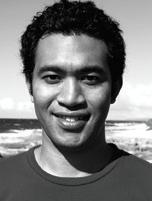
I value …
My sanity, but I worry, do the insane think they’re sane?
Which living person do you admire most?
The person who valiantly pushes forward, despite the impossible odds.
Which living person do you abhor most?
For starters, the trucker driving in front of me recently whose scrap metal fell off his bed and flattened my tire and scratched my fender.
If you were to die and come back as a person or thing, what would it be?
I’d want to be a cowboy – it’s in my blood. But I’d feel too sad branding the cattle or sending them to slaughter.
My current obsession is:
The Vitamin String Quartet. Check them out because they do some awesome covers! What is your idea of misery?
When you let fear stop you from fulfilling your potential.
The biggest threat to a more sustainable Hawai‘i is:
Continued, rampant development.
The first time we met Samson, we asked him what kind of writing he likes to do. Without hesitation he said, “investigative reporting.” Seriously? You mean you’re not like the 90 percent of people who opt to write about music/art/film, but prefer to spend hours and hours researching, interviewing, and possibly stirring up controversy and pissing people off? Exactly. Digging deep, Samson, also a staff writer for The Hawaii Independent, got the scoop on our cover article, “Returning to ‘Ainalani” (page __).

FALL 2010

Originally we set out to show how little mainlanders know about Hawai‘i. I mean, it is pretty laughable when we hear questions like, “Do you really live in grass shacks?” and we scoff to ourselves. Then we realized exactly how little we know about our own islands. We surveyed 50 residents of Hawai‘i between the ages of 18 to 50 from such fields as law, education, marketing and construction, as well as students and other miscellany. In the end, we found how little we actually know about our own state.

by
“I always think of International Market Place as the forgotten child of Waikkīkī. It’s like everything has moved forward in time except for the Market Place, and that’s what I love about it. The atmosphere in here, it’s like the last bastion of Waikkīkī.”
Makana, a master slack key guitarist, is the host of Return to Waikkīkī, a brand new lū‘au experience nestled amidst the banyan trees in International Market Place. The show, set against the backdrop of a 1920s radio show, takes the viewer on a journey through different aspects and eras of Hawaiian music, incorporating all types of hula, like kahiko, ‘auana, and even drunken, or naughty hula.
“This is truly a passion project. When I first started this thing, I thought I was gonna be the next Don Ho, and I would be getting blowjobs in the dressing room, hooking up with chicks, and all these things, right? And then I realized it’s slavery! We’re working so hard to convince people that this is cool, that you can come back to Waikkīkī.”
So what’s wrong with Waikkīkī? “I feel this intense pain. This is where we grew up, and it didn’t used to feel like this. On Kūhiō, it feels like Detroit. Serious. Hookers beating each other up, pimps everywhere. On Kalākaua it feels like an India bazaar. Just nothing Hawaiian.”
It was important to Makana that Return to Waikkīkī not be the “typical” lū‘au. “I really wanted to maintain a sense of place here, perpetuate the culture and create an experience that was genuine and valuable to both the visitor and the local, meaning we’re not just herding people in and stamping in and out every night – it’s not a corporate run thing.”
Makana, whose name means “gift given freely,” first started playing slack key guitar when he was 11, before he learned how to play standard tuned guitar. He met his first teacher, Bobby Moderow, at the slack key guitar festival, and eventually obtained a grant with the Hawai‘i State Foundation on Culture and the Arts to learn from Sonny Chillingworth, who is often regarded as one of the most influential slack key guitarists in history. Makana was Chillingworth’s last student before he passed away in 1994.
The story of slack key, according to Makana, goes something like this: “The first guitar arrived to Hawai‘i probably around the 1700s, my guess on whaling ships. Slack key comes from a brief aside when a ship captain, Captain George Vancouver, gifted King Kamehameha with cattle. The king put a kapu on the cattle, but soon they became a huge problem, destroying native crops, eating the thatching on houses, sometimes even killing people. So the Hawaiians asked for help from vaqueros, Spanish cowboys who taught the Hawaiians to cow punch and basically to be paniolo. The Spanish also brought guitars with them. In published histories, the legend goes that the cowboys never taught the Hawaiians how to tune the guitars so they made up their own tuning. I don’t believe that. I believe Hawaiians intentionally changed the tunings of the guitar in order to facilitate their abilities, in order to be able to play the bass, rhythm and melody all at once.”
In standard tuned guitar, the guitar needs to be fretted in order to manipulate the sound to make a chord. In slack key, you actually tune the guitar to that chord to start. Instead of having to hold the chord to make a note, you can strum open. So your hand is free to manipulate more sounds.
With your picking hand, you’ll create an alternating bass line, and with your fingers create rhythm and melody. “I can create really big sound, just with my guitar because you’re simulating three different parts – it’s a very symphonic approach.”
In 2006, Kirk Hammett of Metallica quoted Makana and André Segovia (arguably the greatest guitar player of all time) as two of his new influences. “Hawaiian slack key is a cultural art form, but the technique is universal, so the potential of it to become a universal language in music is huge. That’s how you keep Hawaiian tradition alive. It’s not just playing it, but you influence other people.”
Ultimately, Makana says he wants to reinvigorate the stigma of Hawaiian music. Instead of reinforcing what’s already expected, “that it’s just booty shaking and mai tais – which should always be a part of lū‘au because we all like to get sloshed and be silly and we love sex and the whole thing - I think that when we present our culture with pride and passion and with expertise it becomes an experience that is profound.”
So what is the value of Hawaiian music, tradition and culture? “Our archipelago is so exotic to people, that that is the hook to bring them here. But people and corporations dress their product in a cloak, so when you go underneath or behind it, there’s no sense of relationship to place for 90 percent of what’s out there. Itʻs an unsustainable direction. You can only go so far away from your sense of place that it becomes obvious to even the lowest common denominator, non-thinking idiot who just wants to get laid and drink beer. Hawai‘i is even going to stop appealing to them because at some point, we’ll have no value to offer. Once
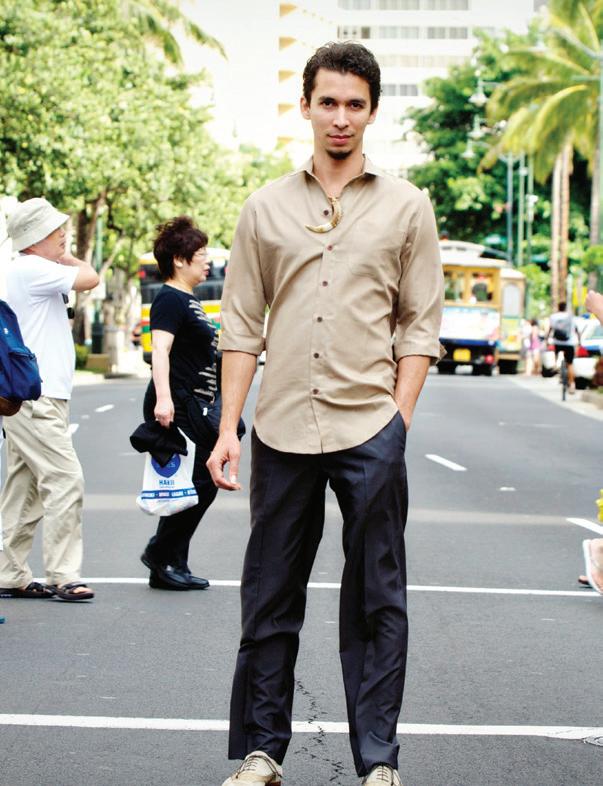
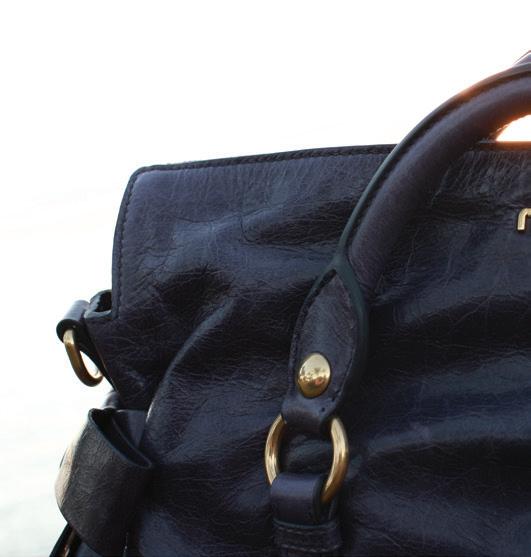
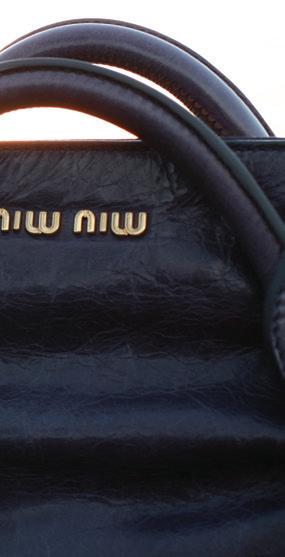
Keoki Ching would describe himself as a starving artist. Though the surfboard shaper has designed custom boards for the likes of BJ Penn, Jorge Garcia and ___, the surfboard industry is not what it once was, and even shapers like Eric Arakawa and Glenn Pang aren’t turning over the profits they once used to. “There are too many boards in the world,” he says. “Every surfer already has three or four boards, and new surfers – well they just get a board from one of their friends. And when you can get a stand-up paddle board at Costco for like a thousand bucks that makes it tough to stay alive and sustain as a shaper.”
That doesn’t mean the quality of his work has declined, in fact quite the opposite. It can take Keoki up to 12 hours just to shape one board. Of-
ten times the most consuming part is understanding a person and what their needs are.
“Kelly Slater has his signature board, but that board might not be the right board for you. In fact, it could be the total opposite of what that person needs.”
Keoki started shaping boards 18 years ago when he was just 17, but always as a side project.
The initial batch were made at a friend’s house in Hale‘iwa, and looking back he says he’d like to burn them all, wishing only to have boards out there that are properly made to his highly technical standards. He studied biology in Minnesota, worked with Nainoa Thompson and the Ocean Learning Academy, and worked as a consultant to the Bishop Museum, where he had access to analyze a wealth
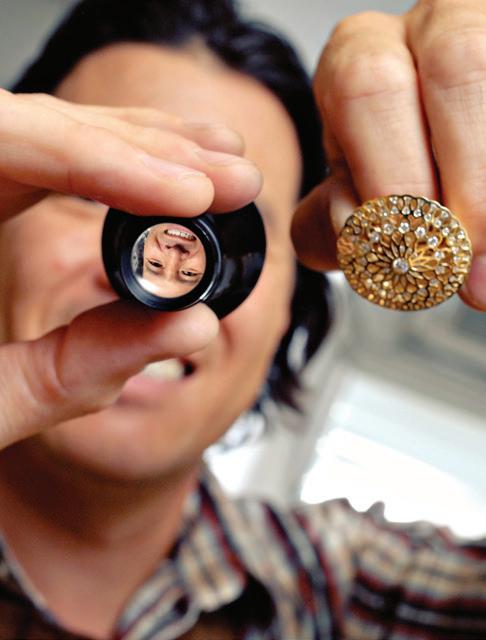
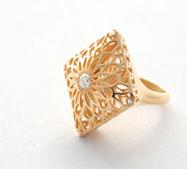
His art pieces remind us of a time when jewels and gems granted protection and peace to its wearer. Today, jewelry designer Jason Dow wants to bring those values of romance, quality and meaning back to our ever-busy, often manufactured society.
As I waited outside Dow’s Chinatown studio, I saw him getting off his motorcycle. He walked toward me, carrying his helmet. I followed him upstairs to check out his artist loft, where beautiful photographs hung and deco furniture abounded. I entered the studio, and I could feel that this was where the magic happened. Tools, machines and chemicals … Was that a sandblaster? So much hightech equipment: 3-D printer, wax injector, rubber vulcanizer, power graver, vacuum caster, rolling mill – is that a 12-pack of tuna? “What’s the tuna for?” I asked. He chuckled, “For when I get hungry.”
I could see why he needed quick, easy meals in the studio. Handcrafting one-ofa-kind jewelry is a long, meticulous process. For Jason, one piece, from concept to completion, can take many months. He showed me two trays of his jewelry he pulled from a safe, each piece constructed of real gold, precious stones and intricate circular designs. I studied each one of them, and no piece wanted to leave my

hand. I tried on almost every one, mesmerized and entranced.
Jason told me that he is inspired by jewelry of ancient times, when every stone had meaning and magical powers, when things seemed “mystical.” The sacred art of mandala also captivates him, which is why many of his pieces have circular patterns. I stared quietly into one of the rings on my finger, and he described, “It’s meditative in a way that’s balancing. I have this belief that the world is chaotic and crazy. I feel like wearing this can protect you and calm you.”
His art must be doing something right because the very ring I couldn’t take my eyes off was on the cover of the Rio Grande Jeweler’s Catalog, one perk of getting awarded first place in gold/platinum at the 2010 Saul Bell Design Award. With his recent national acclaim and demand, Jason’s pieces can now be found in all Hildgund Jewelers of Hawai‘i. But he still works with individuals and couples out of his studio to design custom-made jewelry. He told me he enjoys working with couples about to get married. “I think it’s special that I get to commemorate their love.”
As successful and passionate as he is with his art, his path here was much like his mandala-inspired designs, circular.
From playing lacrosse in Connecticut to studying biology and art at University of Hawai‘i, Mānoa, to traveling the world as a snowboarder and judge, and going to dentistry school in Colorado, Jason experienced many flavors of life. But his fascination with metalsmithing never left him, from the time he first studied it in high school. He left dentistry to attend the Gemological Institute of America, which is the school to go to for a successful career in jewelry. Upon graduation, he became a designer at Maui Divers, until he went independent.
Now that he’s on his own, Jason makes his own schedule, surfing daily, practicing yoga, and sometimes working in studio for days on end. “I’m in to making things that will last forever. The materials I work with are long withstanding, which is why they’re precious. We have so much stuff in our society, that things have become so disposable. I want to bring back value to our everyday life, and make things precious again.”
To learn more about Jason Dow’s jewelry or to schedule a consultation, visit www. jasondow.com.
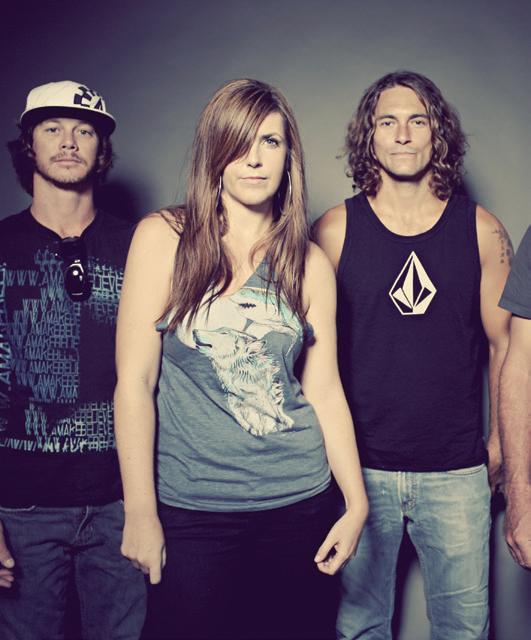

It’s a balmy September afternoon, and I’m desperately fighting off the ominous signs of the flu. But nothing – not even a wretchedly high fever and an onslaught of body aches – will keep me from my interview with The Throwdowns, Maui’s little band that could – and did.
“You feeling any better, girl?” Erin Smith, lead singer of The Throwdowns, asks me, with genuine concern, before I even have the chance to say hello. The band members – Smith, Ian Hollingsworth, Kimo Clark and Ola Shaw – are huddled around Smith’s cell phone for our conference call in their freshly painted (they tell me it is a green “splatter” motif) recording studio in West Maui.
I smile. That’s the band’s modus operandi: Even though they’ve released a hit album, shared a stage with bands like The Fray, Matisyahu, Bad Brains, Panic at the Disco, 311, NOFX and English Beat, and earned a Nā Hōkū Hanohano nomination for “Rock Album of the Year,” the foursome remains as refreshingly real as they were before entering the limelight.
The afterglow of The Throwdowns’ debut album, Don’t Slow Down, has yet to fade. With its unique fusion of punk, pop and reggae (and a little something extra I can’t quite put my finger on), the quartet has taken the local music scene by storm. The inaugural album only has seven tracks, but what it lacks in quantity, it makes up for in sound and lyrics, with songs like “Kihei Town” and “Stolen Car” becoming rock n’ roll staples on Maui – and beyond.
Love ’em or hate ’em, there’s no question that The Throwdowns have put Hawai‘i’s music scene on the proverbial map, and they are about to take it another step further. As we chat, I can hear the gentle strum of a guitar, the occasional tap of drumsticks – a testament to the fact that you can never take the music out of the musician. It’s plainly obvious The Throwdowns are devoted to their music, and if I’m not mistaken, to each other as well. “We are pretty much a family,” says Hollingsworth, “and we keep getting closer.”
With such a full dance card lately, it is likely fans are bound to notice The Throwdowns’ ab-
sence from the stage. But no need to panic; in fact, there is reason to celebrate, because the band has been holed up in their studio working on their next album, which they say should be released within the next few months. “We are really focused on recording right now,” says Clark.
There’s just one thing, though: The album has no name. “Nope, we don’t have a name yet,” Smith admits, laughing cheerfully. I imagine her shrugging her shoulders in mock frustration.
“Yeah, we probably won’t figure that out until we finish recording,” Hollingsworth adds.
But what about the sound?
“It’s some of the same, but also very different,” says Shaw, somewhat cryptically. “We’re trying to make sounds like no one else.”
Smith explains that the band’s musical muses emerge while they are in the studio. “We are growing, evolving into our sound,” she says, “and we are always looking to create the next sound … something sonically different.” But one thing is for certain: “We don’t do angry, depressing music,” says Smith. “We’re not about that.”
This should come as no surprise. Anyone who has seen them perform knows the group’s upbeat enthusiasm is infectious. “We are really trying to create great, positive music that we enjoy,” says Hollingsworth. “It’s a lot of fun, and we all love what we do.”
So, where does the band see itself in five years?
“We’d like to go national,” says Smith.
Shaw jokingly chimes in, “No way, man, we’re shooting for total world domination.”
Total World Domination? I offer the suggestion that it would be a good name for the new album.
Smith laughs, and although I can’t see her, I know her eyes are sparkling mischievously, and she says, “We’ll take that into consideration.”
To keep up with The Throwdowns, visit www.thethrowdowns.com. Makeup by Gabriella Sydow Hair by Alicia Huls for Soleil Luna Salon Erin’s
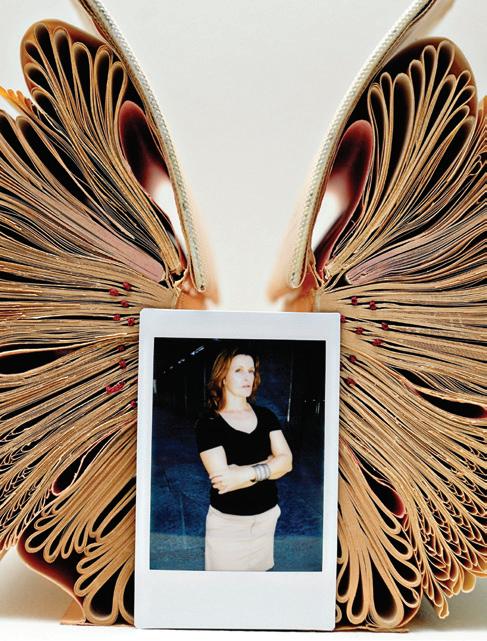
Artist Jacqueline Rush Lee works with books, but don’t be so quick to call her a “book artist.” “There’s definitely a field known as the ‘book arts,’ but it’s funny, I was notified that I actually don’t fall into that category,” laughs Lee. “I think the main distinction between book artists and myself is that they actually make books from scratch. I, rather, fall into a category where I alter them.” Lee sees herself as sculptor who works with books as her medium, a new breed of material which she sees as indicative of the 21st century in it’s versatility and depth.
Originally a native of Scotland, Lee stands small in stature but with looming vibrancy. With a firm handshake and an inviting smile, she takes me through her current exhibit, Tactile Repeat, at The Contemporary Museum at First Hawaiian Center, featuring a selection of works from her book sculptures series. We make our way through a narrow, winding hallway of strange and mythical pieces that seem to reach out from their carefully lit encase-
ments. “This particular exhibition itself focuses primarily on the processes involved in creating these objects and how those processes translate.” explains Lee.
With a background in crafts and a master of fine arts from the University of Hawai‘i at Mānoa, Lee professes that she gravitates towards objects that possess histories and record physical processes. “I’m especially drawn to the complexity of the book as an object,” Lee says. “Not only are there histories transferred from their direct authors, but we’ve also got to consider the traces left by people who have handled them, like dog-eared pages or marginalia. And considering that I’m altering these objects, I contribute to this significantly as well.”
It’s interesting to contemplate the evolution of books from their Neolithic roots to now, especially when confronted with Lee’s reworkings of them. Books are complex, yet functional objects that have been a quintessential part of cultures since
the beginning of time. The origins of the book date back as far as 34 BCE with the cuneiform, the earliest known written record, which was said to have originated in Sumeria, now modern-day Iraq. We’ve made a few revisions to these archetypes since acquiring the concept (think of the innovation of e-book readers, such as the Kindle), but it remains true today that we tend to view books as vehicles of record, whether they be for stories, laws or narratives. Given this, Lee’s works mark a new epoch in how we choose to perceive these culturally and historically steeped objects. Her works are at first glance ethereal; undoubtedly representative of their aesthetically pre-altered state, and yet there remains the indelible sense that something has been fundamentally altered within its framework. Lee attributes this shift in perception to the literal and metaphorical restructuring that takes place during the artistic process of creating the pieces.
“When I work with books, I’m interested
in taking everything that we know about a book and scrambling it in such ways that it has a new voice,” she explains. Because of the dichotomous appearances of these otherwordly creations, many are tempted to inquire on the source of her inspiration; rather, there is an urgency to inquire as to the meaning of them. Surely, I ask her, the stories of the objects have something to do with the outcome of their transformations. To this, Lee responds, “As far as meaning goes, I’d like for the art to communicate a stillness or space for communication so that viewers can project their own meanings into them.” What is at once perplexing and intriguing about Lee, and subsequently, her work, is that she successfully creates an object that is apart from literal and narrative representation, reworking its identity from what was once a mundane, everyday object, and transforming it into a physical and metaphorical palimpsest – a document that has been altered but bears traces of the original text. In doing so, the pieces seem to acquire a new sense of tactility and consciousness.
As we near the end of the corridor, concepts of reinvention and paradoxical shifts fresh in my head, I am struck with the notion that all art can be seen as the use of something in a new or reinvented way. There is special weight and cultural significance to this thought when considering Lee’s artwork. Perhaps Lee’s reworkings of the book, an object that has been consistently indicative of our zeitgeist as a culture throughout the ages, can be seen as a mere microcosm for progress as a whole. But as I am thinking this, I am suddenly aware that this would’ve be one of my own interpretations and wouldn’t necessarily be true for all other viewers. Which is precisely the beauty of Lee’s work: They’re open books. What we choose to see is up to us.


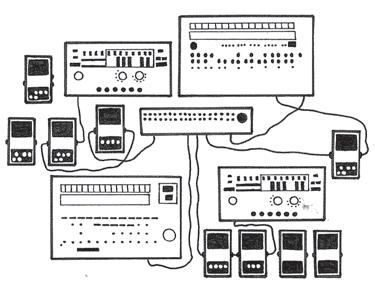
This one is super sexy. It’s like a MacBook Pro and a box of LEGOs shared a bottle of Ciroc, and this was the result.
From a design perspective, it gives geeks butterflies. From a functionality perspective, it makes geeks hornier than True Blood. They tried to cover all the bases of digital production with built-in samples, beat matching, synth tones and drum machines, but added a simulated “analog” tape feature called FM Radio to capture beats, sounds and motion sensors, allowing you to control your recording software. I’m blowing all of this up to you and it’s not even out yet. So either their web designers are as good as their production teams, or this is going to be the must-have tool.
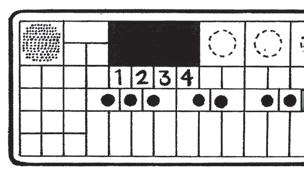
Tenori-on is more interactive, allowing the user to create a visual design along with music using the 256 LED lights. Based on the setting you use, you can make a song out of a smiley face. It looks like an Etch A Sketch filled with mystery-flavored Skittles, but it sounds awesome. You can literally mash the keypad with your palm and create
genius. Like a wine made more delicious with a great cheese, Tenori-on is best when paired with the looping capabilities of Ableton Live. Best part, the Tenori-on is 2-sided, so it’s like a glow stick light show with trippy sounds. Might be hard to pull off rocking out like Joe Strummer holding a musical light-bright, but your far-out button mashing will surely blow minds.
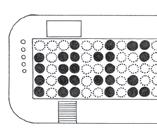

This one is free and completely web-based. It allows you to concoct your dream setup with synths, beat machines, effect pedals and mixers that you patch together to make them sound uniquely yours, while giving you the chance to download your song to edit. If anything, it’s a perfect lesson in interface setup while allowing you to learn what goes where. It’s also like social media for your songs, since you publish the songs to your account and can follow other users and vice versa. Sound like a pro at www.audiotool.com.
a string of recording tools help you make music like a pro.
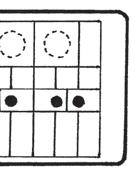
The age-old battle of music production snobbery. Depending on where your allegiance lies, (or more realistically, where your musical influences lie), you have made some sort of choice. You are using digital or analog equipment to create music, or a combo of the two. Yes, there are some who only use one or the other. I personally am “analog” in terms of gear, yet I’m “digital” in terms of recording. I use Logic software made by Apple, classified as a DAW (Digital Audio Workstation). For the most part almost everyone is editing music using some sort of DAW (usually Pro Tools), even if it is recorded analog on tape. My point is there are many options - from free to the more complex and pricer - nowadays to create and perform music.
Locally, many artists are starting to adapt digital interfaces into their live performances. Matthew McVickar aka Lapwing, aka DJ Capecod, aka master mixer for Clones of the Queen, uses Ableton Live with his MacBook Pro, as well as several Akai and Korg MIDI controllers to perform. The duo Alt/Air use a similar setup based in Ableton on a Mac, and we in Painted Highways sing through Holy Grail digital reverb pedals.
The line between digital and analog is starting to blend more than ever and the means to creating this blend are more accessible. The battle has not been won, but at least it’s evolving, helping musicans and deejays alike to up their recording antes.

This is the staple of laptop-based artists. As the name states, it is used “live.” The basis of the program is its looping capabilities. Artists like Girl Talk build their performances around this software as much as a singer/songwriter does his or her acoustic guitar. The gist is, whatever sound you can get into your computer, it will loop it, layer it and match the beat so you can create songs on the spot. If you see someone on stage making dreams come true hovering over a laptop, they are most likely using Ableton. Added bonus: You get to look like you’re a part of the Blue Man Group with that lit up screen so close to your face.
by
Wai‘anae was once a self-sufficient region, an ahupua`a, that was able to produce adequate amounts of food, while managing its land and water resources in a highly sustainable manner. Today, Wai`anae has the least food security in the state. Due to the lack of food or lack of healthy food, many families in the community are hungry and/ or sick. MA‘O Organic Farms is an organization that practices traditional Hawaiian values to restore a thriving Wai‘anae community. “We choose organic because our ancestors were truly the first organic farmers,” says Kamuela Enos, IV, the education and community specialist for MA‘O. “To farm this way, we need to use the same methods as our ancestors, knowing local ecology and weather patterns.” MA‘O is the largest organic farm on the island, located on 16.5 acres in the Lualualei Valley of Wai‘anae, on the west side of O`ahu. But they are not just a farm, they are also what Enos calls a “social enterprise,” a business that reinvests back into the community. MA‘O is an acronym for mala ‘ai ‘opio, which translates to “the youth food garden,” a movement to develop the youth and a living, local food system.
MA`O Farms’ business is expanding, generating $1 million in produce per year. MA`O produces and sells 35 to 40 varieties of crops, from salad greens and cooking greens to herbs, fruits and root crops, all of which can help us to think about eating more sustainably. “Ninety percent of our food in Hawai‘i is imported on a barge,” says Enos. “It’s cheap and processed, and we are degrading our homeland for McDonald’s burgers.” He continues: “Environmentalism is a social issue. A lot of our environmental problems are based on a thriving global economy. At MA‘O, we believe in agriculture that embraces a legacy for future generations to farm.”
MA`O uses education to empower its community. All of their programs relate to their ‘aina-based community development through growing organic food and growing youth leaders. They offer a wide variety of community and educational programs primarily targeting the Wai‘anae youth:
• YLT (Youth Leadership Training), the internship for Wai‘anae’s young adults who can work at MA`O 20 hours a week in exchange for full tuition to Leeward Community College and a $500 per month stipend.
• Partnership programs with Wai‘anae High (Ka`aihonua) and Wai‘anae Intermediate (‘Ai Pohaku) that promote agriculture science and traditional Hawaiian wisdom.
• A research partnership with Leeward Community College and the US Department of Housing and Urban Development to expand expertise in the fields of tropical organic agriculture.
• Get educated. Learn about your food, where it comes from, and how it was processed. Hawai‘i still largely depends on imports for its food and produce.
• Buy local and organic.
• Subscribe to the MA`O CSA (Community Supported Agriculture). $32 per week for a weekly box of seasonal produce grown on their farms.
• GIVE Day (Get Involved, Volunteer Environmentally), the last Saturday of each month, when you can work on the farm. Please call 808-696-5569 to RSVP.
For more information, visit www.maoorganicfarms.org.
a new collection of essays about hawai‘i ask the big questions
Text by Sonny GanadenWe’re not getting any younger. This summer, The New York Times asked in a front-page article, “What Is It About 20-Somethings? They move back in with their parents. They delay beginning careers. Why are so many young people taking so long to grow up?”
The article bemoans the delay of the milestones of adulthood, which according to the cited sociologist are: completing school, leaving home, becoming financially independent, marrying, and making a baby. The author fails to mention that every one of these anachronisms has become increasingly complicated in the modern world except for “making a baby,” which from what I hear is still fun as ever. The costs of college and home ownership have grown exponentially, relationships are, well, complicated, and almost nobody’s hiring. Like being a professional rock star and guiltless sex, getting completely on your feet economically by the end of one’s 20s is predominantly a Baby Boomer phenomenon from decades past.
Most Boomers don’t get the world that they created, as if today’s self-obsessed modern culture isn’t a product of an American generation’s megalomania. If we’ve been watching too much MTV, our folks have been reading too much Thomas Friedman.
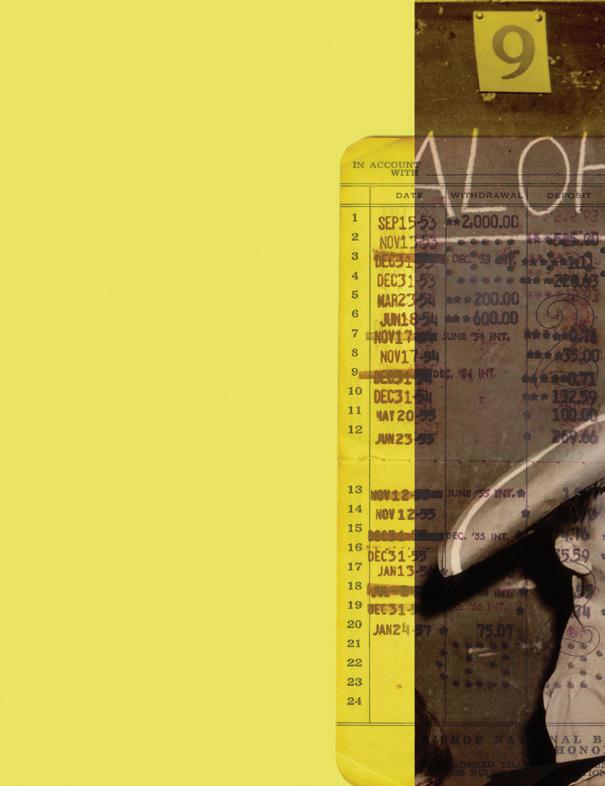
The Great Recession is in large part due to the last 30 years of personal overspending and governmental agencies being given over to the very industries they were to regulate. The last decade’s two wars left an American population to wallow, severely alienated by gross economic inequalities. The national jingoism and conversation over whether or not it’s gross to be gay (eww!) trumped outsourcing, the divestment of public education, and increases in military spending.
Hawai‘i has been no exception to the national trend. Although the Hawaiian Renaissance and decades of respecting labor more than our mainland counterparts brought us progressive policy –the basis on which to rebuild an indigenous nation – and renewed an inherent respect of the environment, there has been some fairly deep economic damage done in the wake of that idealism. In 1992, The Price of Paradise: Lucky We Live Hawai‘i? became a local best seller. A compilation of cartoons and essays with titles like “Government Spending: Smoke and Mirrors” and “Tax Hell,” the book affected policy and learned discussion regarding property rights to the present, in large part because it dared venture towards the big questions of the role of government, and whose rights mat-
ter in an island community. Besides having a public school system that by many accounts is broken, the Aloha State now also has the most millionaires per capita, and requires comparatively little in the way of property taxes. The Price of Paradise was the zeitgeist of a building spree at the expense of indigenous values in a way that could be construed as property-oriented conservative, or alternatively, haole.
It took almost two decades, but local progressives now have their own collection of essays in The Value of Hawai‘i, published this year by the University of Hawai‘i Press. After years of working in their own spheres, the authors of the book were brought together under the guidance of local academic editors Craig Howes and Jon Osorio. With chapters titled “The Economy,” “Tourism,” and “Agriculture,” the size of the canvas becomes evident, and the picture painted is not all plumerias and sunsets.
The authors also have the good sense to team up with young creatives for a set of book openings through the fall of 2010, just in time for election season. All this points to a crisis of identity that locals have not faced since the Renaissance. New ways of thinking may win out to the benefit of all. The breadth of the ideas put for-
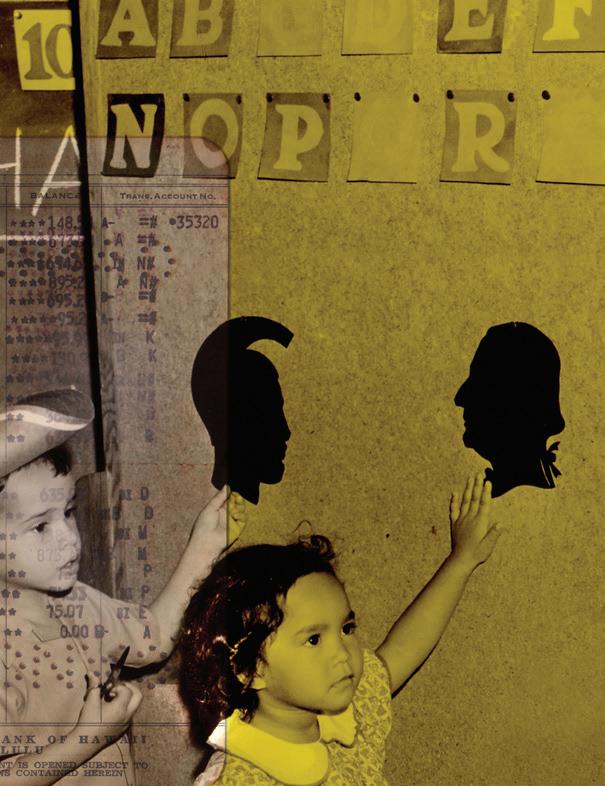
ward by the book by the various authors do not solve all problems, but like good art, the work makes a real attempt to connect. That art, literature and music usually comes from the bottom up, uncensored, unrequested, and seemingly coming out of nowhere, is the sort of aesthetic needed to address Hawai‘i’s inherited structural problems. Because a long time ago, and from time to time, residents realize these islands are more than commodity to be bought and sold; a fishpond for a sugar farm for a golf course for a set of apartments. We may collectively emerge from this experience once again with the conviction that a thoroughly Western epistemology may not work to emancipate us from mental slavery, as by the hand of the Almighty, we forward in this generation.
For more info. visit: thevalueofhawaii.com
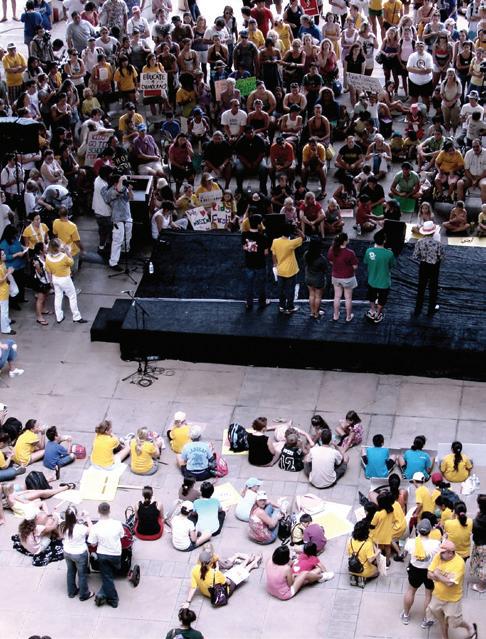
furloughs fridays, protests, arrests and empty rhetoric mark a sad chapter in the history of hawai‘i’s public school system.
The 2009-2010 school year had 17 fewer school days than originally scheduled, giving Hawai‘i the fewest number of instructional days of any state in the union. With enough blame to go around amongst the teachers union, the Board of Education, the Department of Education, various legislators and the Lingle administration, a small group of education activists took the hard line and became the moral compass for a wayward system.
On April 13, 2010, after the camera crew from the local news station left and the lobby to the governor’s office was quiet, two parents and a student activist of the group Save Our Schools were politely and apologetically arrested and taken a few blocks to the downtown station to be booked. For the two nights prior, activists from Save Our Schools slept under the oil painted gaze of past state governors, flanked by glass cases containing honoraria from foreign ambassadors, model canoes, astronaut flag patches, and tokens of appreciation for a recent gubernatorial visit to China. Months later, April Kamilah Batista, a University of Hawai‘i student activist who was arrested during that spring evening explained, “It was pretty serious, and we’re still not sure what’s going to happen. Believe me, my mom wasn’t happy to hear I got arrested, even if it was for schools, and I got out in an hour.”
By early 2009, it was clear the Great Recession was on its way to Hawai‘i. The summer’s headlines noted an American and local economy teetering on collapse. States across the Mainland were going in the hole to maintain basic services to the public, working with the Obama administration to bring something home from the 2009 American Recovery and Reinvestment Act. The state was predicting a significant drop
in funds to pay for state services, and the Lingle administration followed suit and suggested hiring freezes and furloughs for state workers. During a string of economic bad news including the continuing implosion of the housing market, bank bailouts, and a scrambling private sector, those announcements came with little bravura or foreshadowing of the pitched battle over public education to come.
The framers of our state constitution had tough times in mind. Since the Constitutional Convention of 1978, Hawai‘i’s state constitution has loosely required that the governor’s office and the legislature pass a balanced budget based on estimates by the state Council on Revenues. It is likely this requirement saved the state from the acute crisis faced in other states, where governmental services (everything from teacher and firefighter salaries to basic maintenance) were paid for through debt, and could have failed completely after the meltdown of the housing market but for federal stimulus funds. Throughout 2009, as the school year developed and the ironically named Furlough Fridays continued, various state agencies began to look increasingly ineffective, and the governor’s office became increasingly maligned. The balanced budget requirement became the familiar refrain of the Lingle administration, used to rationalize cutting state programs, staff, and the continuation of furloughs. As the dust settled from the year’s battles, the budget was also used to stoke the fire of an already antagonistic relationship between the administration and various unions, highlighting administrative priorities.
The first Furlough Friday was met with a good amount of surprise by many par-
ents, many of whom were too busy working to notice the implications of school closure. In response, groups emerged. From the Windward side, Hawaii Education Matters began organizing an event on the first of these days off at Noelani School in Mānoa, alma mater of none other than the sitting president. Liam Skilling, a lawyer with two daughters in grade school, who would become one of the leaders of Save Our Schools explains, “I heard about it, got on KTUH (the popular UH radio station) and told everyone I could about the demonstrations.”
Organizers of the first event in Mānoa explained it as a “teach in.” After speeches by UH professors, a visiting celebrity and concerned parents, school busses with volunteer drivers from the bus drivers union took the parents, students and teachers to the State Capitol to continue the rally. There at the Capitol on a school day, the crowd got a musical treat by local superstar Jack Johnson, and waved red posters with the governor’s face that read “Lingle Day Care.”
Although well documented by local media, the furlough situation quickly became normative, the most recent debacle in a public school system that has been failing for a generation. Hawai‘i has done its part in a national divestment in public education. The nightly news plays pieces on the modern typicality of a middle class family in Hawai‘i, better than many, where mom works a full-time job, and dad works two in order to send their three boys to private school. What is most shocking about these bits on the evening news is that they are not shocking. Decades of elite flight where many families with means – and many without – have broken themselves

economically to pay for an alternative to the state’s education system has left us with the present situation: cultural norms that reinforce a winner-take-all worldview. It has become tantamount to child abuse to send one’s children off to school with other kids who show up hungry and in need of subsidized lunches, kids who have complicated home lives, or God-forbid, Micronesians.
The right has won the culture war, spending a generation depicting government as bloated, inefficient and unnecessary, and advocacy groups like a union for teachers as bad for business. Last year an article in Honolulu Magazine asked, “Are Teachers Making the Grade?” with many readers politely saying no. The middle class has been jumping ship, a tragedy of the commons in an environment where educators and the classroom have become the final point of contact for many kids, where their problems coalesce before an unappreciated teacher.
***
Winter break of 2009 came and went
with little movement to end the furloughs. Through funding by The Learning Coalition, a well-funded education advocacy group, kids from Save Our Schools were on TV during primetime, deriding the governor’s statements in between segments on 60 Minutes and American Idol. The fight was far from over, it was merely smoldering.
Save Our Schools kept meeting on Furlough Fridays, at times with fewer than a dozen parents, but always with media coverage. At a Friday meeting, the SOS decided to have a multimedia art contest wherein students could express their feelings about the situation. Many of these pieces were then archived on the Save Our Schools website, and found a showing at a small gallery in Chinatown, then the lowest floor of the State Capitol. “Y’know, these kids are articulate,” says Skilling. “It didn’t start out as a mission to collect student artwork, but that’s what we did. I still have kids’ art all over my house.” In March, the artwork was slated to be viewed in the Capitol. In what was later appreciated as censorship by the state, the Department of Accounting and General Services (DAGS – the agency tasked with managing numerous state pro-
grams) told Skilling and the SOS parents the artwork would not be shown in the public building due to some content that was disparaging to the governor. As a few of the organizers of SOS are lawyers, they knew this was a clear violation of the state and federal government’s first amendment protections – an easy case. Within hours, mainland lawyers from the ACLU were phoning state legislators, and DAGS was figuring out how to retract. The student art went up that afternoon and stayed up through the month.
By April, the SOS parents were ramping up for a showdown with the governor. The famous stage theory of Elisabeth KüblerRoss, whereby one progresses from denial to rage through bargaining to depression and the eventual bliss of “acceptance,” was experienced in reverse for these activists. After 13 Furlough Fridays, SOS organizers had met with various significant legislators, the Hawai‘i State Teachers Association, and various members of the Board of Education. At each of those meetings they personally handed a policy maker a copy of the 1000 Student Voices art collection. With a few short months to the end of the
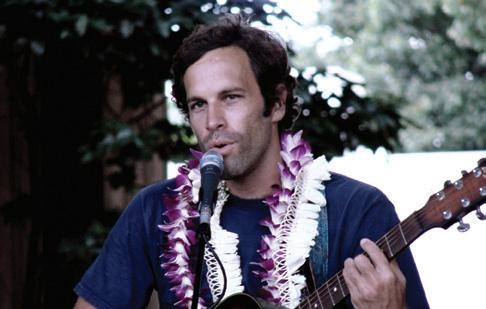
school year, they wanted nothing less than a meeting with the big lady herself. On their website and in letters to the governor, the SOS decided not to pull any punches. In an April 5, 2010 letter, they wrote:
We are dismayed by your stunning lack of progress on the Furlough Friday crisis. The children of Hawai’i have so far endured 13 Furlough Fridays, and nothing has been accomplished to bring this situation to an end or prevent it from continuing next year. … Until you do your constitutional duty to RESTORE THE FULL SCHOOL YEAR, we do NOT want to hear one more word about your ideas for (1.) allowing the governor to appoint the superintendent of schools; (2.) abolishing the Board of Education; or (3.) defining which of the Department of Education Employees are essential. You have had seven long years to reform the DOE. It is unconscionable that you are now, in the dying days of your governorship, trying to tie the resolution pertaining to Furlough Fridays to your own policy agenda.
As the Windward parents in Hawaii Ed-
ucation Matters were organizing as a nonprofit advocacy group, Save Our Schools was holding the more radical front, taking the fight to the governor personally, this time in ALL CAPS.
At this point, the SOS let go of polite diplomacy and took a more direct route. On a Wednesday afternoon, SOS parents requested a meeting and took the elevator up to the governor’s office. The sit-in was the culmination of the year, the inevitable fight between the parents and the governor that was foreshadowed in the fall. The governor never showed, and by that afternoon it was ON. After hearing from a staff member that the activists and their well-behaved children could stay, however if they leave the doors they could not come back, they spent the night on the surprisingly comfortable state couches. In true 21st Century fashion, we could follow the whole thing going down via Twitter and Facebook updates and new site postings. After seven days, by the close of business in April 13, it was clear there would be no meeting,
and a few students and parents decided to stay there until they got their point across. A few days prior, eight citations were given by state sheriffs for trespassing. Now activists were being arrested.
Not everybody agreed with the SOS’s new tactic. Newspaper editorials claimed that historically, sit-in protests haven’t worked to garner favor with policy makers (not withstanding the American civil rights movement, of course). But as any buzzed, first-year liberal arts grad student might tell you, power concedes nothing without struggle. Considering what has not worked to fix public schools, like blaming teachers and their unions, test-driven curriculum, elite flight, pretending we can fix schools for free, threatening to break up the DOE and trade one bureaucracy for five, or the current ballot measure to alter the appointment of the board, staying overnight in a lobby on the fifth floor of the legislature was worth a shot.
Lingle’s response to the protests and arrests seems to have rested on two assumptions: first, that the voting public would see these people as misguided radicals; and second, that they would go away quietly.
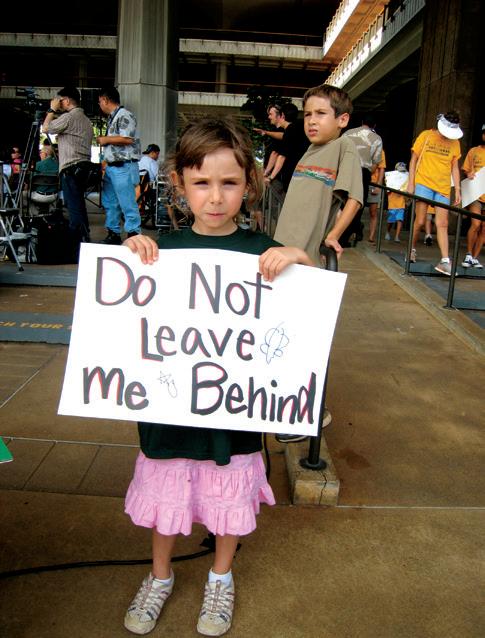
Neither of these assumptions was correct. Konrad Ng, a respected academic at UH, discusses the SOS’s use of Twitter, Facebook, and their website in a blog entry titled, “Save Our Schools: Tactical Media In the Digital Age.” He writes, “The case of SOS808 has profound consequences especially when we consider that during this episode and to date, Governor Lingle has kept no blog, Twitter feed, YouTube channel or active Facebook page. These moments highlight how digital activism will ensure a specific version of events in future drafts of a ‘controversial and highly contentious’ chapter in the history of Hawai‘i’s public education system.” The SOS website notes where the story was picked up by locations far away from the tradewinds, by The New York Times, The Times of India and Time magazine.
As the dust settles from the nightly news reports, a skeptic wonders. Headlines note that July of 2010 showed an increase in tourism and subsequent revenue, a fiveyear high. Has the budget crisis, our Iraqi WMD that got us in this mess, been as dismal as predicted? Was the education of students in Hawai‘i used as a political tool to consolidate power in the executive branch of state government? More cynical questions arise: Have we, through either gross negligence or poor policy, created a public education system that funnels youth to our primary economic drivers in the military and retail tourism? Will we lose the middle class in Hawai‘i?
Although derided by the Lingle administration and some other key players, the grand teachable moment from the Save Our Schools protests is that it worked. Furloughs, protests and arrests were likely the catalyst for structural change that the state’s educational system needed. That maybe, like a meth-mouthed junkie on cable TV’s Intervention, the only thing that really works is hitting rock bottom. If we don’t think having the fewest number of instructional days in a school year in America is rock bottom, consider that having 167 instructional days means our students are working less than their counterparts in most of Europe, South America, and sub-Saharan Africa. On the other end of the spectrum are the kids in Japan – who, with their impressive and rigorous school year have proven to be good at nearly everything – including little league softball.
The SOS activists never got their meeting with Lingle, but they may win out in the end. After getting an audience with the other power brokers in state education, these activists would not go gently into that good night. Hawaii Education Matters is presently a supporter of televised debates amongst the gubernatorial candidates. Save Our Schools continues to be an advocacy group, working with other advocates to bring Hawai‘i’s schools back from the brink. Since the arrests, there has been good news. Hawai‘i is now in the top 10 states among states to receive Race to the
Top funding. The teachers union unanimously agreed to the proposed alterations and upgrades to the system in order to qualify for the program. Presently the federal government is promising $75 million to the state to bring our classrooms technologically into the 21st Century and to update programs to meet needs. At the end of the legislative session, a bill was quietly passed that requires a minimum of 178 instructional days in the coming year, putting the state on a track that holds more promise than the previous decade’s set of policies.
Save Our Schools, by taking the hard line in a conversation about public education that was being taken over by the bully pulpit and cold economics has become a political force in the state. The organization is holding a candidate forum, actively updating its website, Facebook and Twitter accounts, and with other organizations formed as a reaction to Furlough Fridays, has become a player in the 2010 election season. Vernadette Gonzales remembers, “We, the SOS and a few of the other organizations, created an atmosphere where these things could happen. We showed them that community support was there and real.” Still, she and the few others have to pay for their trespassing citations.
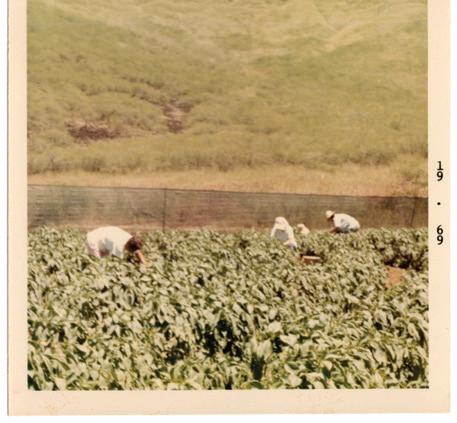
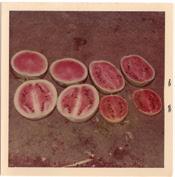

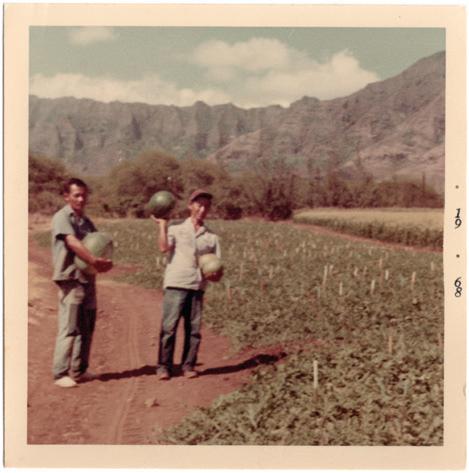
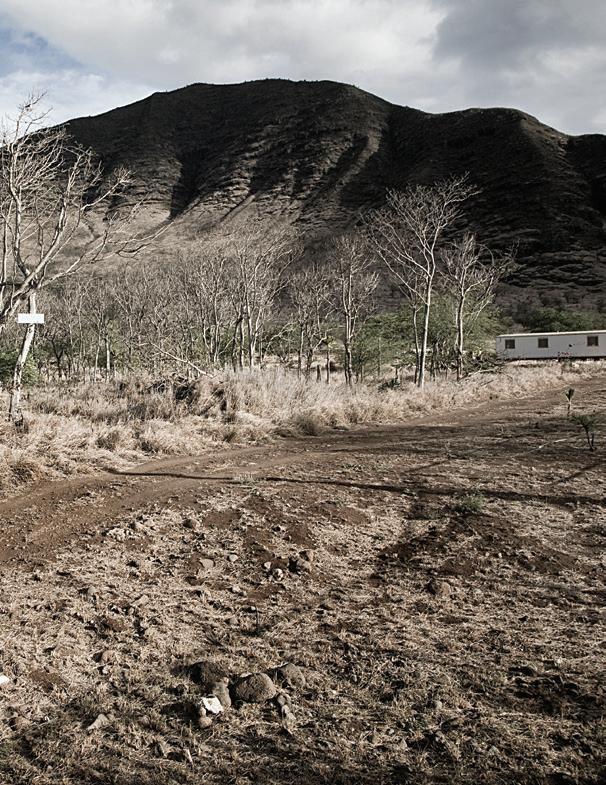
The idea of communal living, the cooperative, the idea of sharing resources to advance a common goal, while only recently gaining a foothold in big cities like San Francisco and New York, has been an idea perpetuated by our ancient Hawaiian ancestors since the days of the ahupua‘a. Much has been criticized in the way of Hawai‘i as being backward, always behind the times. Perhaps it is a looking to the past in order to pave the way for our future.
On today’s O‘ahu, the increasingly limited space on the island and its isolated location have created a place with expensive property and an overdependence on imported goods – an overall higher cost of living for people who typically don’t earn as much as their counterparts on the continental US. On an island so small, O‘ahu and its neighbors seem like ideal places for co-operative living, or the co-op, to flourish, ascribing to a different kind of contemporary ahupua‘a system. Whether to gain mechanical skills, provide food, help small businesses get off the ground or to help artists share their work with the community, the co-op movement on O‘ahu is exponentially essential for reasons both practical and philanthropic – for the survival of people and for the preservation and perpetuation of culture.
The co-op movement is believed to have its roots in 19th century Europe, but the ancient Hawaiian concept of ahupua‘a prevailed long before. Dif-
ferent from private land ownership, the ahupua‘a land division system had each island (mokupuni) divided into large units (moku), and each moku was divided into ahupua‘a. The size of the moku depended on the resources of each area – whatever semblance of land and water that could ensure a constant supply of food and other resources for the area’s residents determined the divisions.
Today, whether the word, “sharing,” brings back childhood memories of fighting with your siblings over the last piece of candy from the Halloween stash or the time when your livelihood depended on an extra sandwich from a colleague in exchange for washing the dishes, the concept of communal resources for survival has always brought people together – sometimes willingly, sometimes not.
Do you remember the communal table trend at so many restaurants that boomed a few years ago? Whether you begrudgingly shared a table at a crowded restaurant for the sake of sparing your tired feet, your rumbling stomach and another hour in line, or whether you were eager to dive into conversation with the stranger next to you (spinach between teeth and all) about your favorite dishes at the restaurant and your pets’ funny habits at home, the communal concept going mainstream for the sake of social engineering struck a nerve in society
during a time that was – and still is – tough on the economy.
Times that are tough on a society’s pocketbook have a negative domino effect on morale and a myriad of other aspects of a well-functioning community. However, one strength of a people that has emerged time and again is that adversity breeds creativity, that in every unfortunate situation is an opportunity, if not many. This is when the idea of sharing moves beyond the selfish childhood memories and flourishes into progressive, innovative and organized ways to make something out of what may initially appear to be nothing.
While collectives rely on a pool of talent, these purveyors of talent must first have the resources to produce. This is when the co-op comes into play as a root of a society’s ability to create what is necessary and what is beautiful.
One of the vanguards of this movement is Rich Richardson of The ARTS at Marks Garage, a gallery and multi-use space in what has been dubbed Honolulu’s Arts and Culture District, an area that straddles Honolulu’s downtown and Chinatown. The ARTS nurtures new arts collectives such as Space & Sound, provides local theater troupes such as On The Spot with performance space, and spearheads events such as the growing “Slow Art Fridays” – a walking art gallery event that centers people around a hub of slow food, organic wine, live music and yes, a communal table.
In this community-minded artistic vein, Richardson has helped to create the Chinatown Artists Lofts in the historic Mendonca Building, which are relatively afford-
able spaces for working artists. A long-time dream finally realized this year, the lofts have become a reality with help from a revived nonprofit, the Hawai‘i Academy of Performing Arts (HAPA), and the forprofit Chinatown Yacht Club, which occupies a space in the same building as the lofts. Richardson hopes this nonprofit-for profit partnership model will enable a sustainable arts endeavor in the lofts that will produce “a nice bit of synergy ... [making] Chinatown more appealing, artist-friendly - a creative industry finally.”
Whether you’ve always been a working artist and are continually looking for the perfect way to share resources with like-minded people, or are curious about exploring a skill set that may not be so friendly on your wallet or tiny living space, O‘ahu is rich in resources. Below are just some of the co-ops that are making the island go ’round.
Creative cognition: Creative Research Cop at the Chinatown Artists Lofts Artist and musician Vince Ricafort knew his artist loft would be for more than just himself. Before the lofts’ availability, Ricafort says, “A space dedicated to our creative activities was new to us. ... I became occupied with the question of how to sustain such a place.” Realizing that his friends, also artists in various media, needed a creative workspace, as well, he decided to form the Creative Research Cooperative, which has two studios, storage space, a writing desk, a draftsmen’s table, film screening area and open performance space. “It is a place where we can develop
our ideas, reflect on our experiences and share our dreams,” he says. The six lead members of his co-op, aside from himself, consist of three bands, a writer and a performance artist. “Not all of us are always profitable. So it’s nice to have a space that’s affordable and have a space that allows us that freedom. ... I’ve never been in a place where it’s been as acceptable to be loud or creative or weird,” says Ricafort. For more information on the Creative Research Co-operative, visit: www.hicreativecommons.com or email vnzkee@ gmail.com. Chinatown Artists Lofts, located in the Joseph. P. Mendonca Building, 1116 Smith St. For more information, visit www.chinatownartistlofts.com.
With a drum set, guitar, bass, amps, mics, mic stands, cords and a piano present at all times, and at only $10 an hour, the Blaisdell Studios sound like a dream for many local bands. Josh86, music promoter and member of 86 List, Black Square and Pressure Drop, came across the studios in the historic Blaisdell Hotel through Ricafort. Josh86 started with one room, but has since grown to running two rooms in the past year and hopes to expand to help even more artists. Currently, 12 bands share the space. “Artists or musicians have to have their own space to create. They need a sense of ownership, a creative zone, a special safe area where they can be expressive,” he says. In addition to the affordable rates, communal equipment and interesting art in the space by the likes of tattoo artist Mike Ledger, bands are encouraged to
THIS IS WHEN THE IDEA OF SHARING MOv ES BEYOND THE SELFISH CHILDHOOD MEMORIES AND FLOURISHES INTO PROGRESSI v E WAYS TO MAKE SOMETHING OUT OF NOTHING.
book blocks of time from two to five hours in order to keep the creative process unbroken, as opposed to the usual rushed process that can take place in more expensive studios.
Blaisdell Studios located in Blaisdell Hotel, 1154 Fort Street Mall. For more information, email meleroom@gmail.com, $10/ hour, monthly rates available.
The 1-year-old Kickstand, run by Nicky Rowles and Cyrus Camp, a co-founder of the volunteer-run Cycle Mānoa, implores a bike shop model that incorporates several elements to create a community – it’s also a cafe and a workshop. The Mechanics’ Club, one of the services The Kickstand offers, is a way for cyclists both new and experienced to have access to bike work stands, to tools that would otherwise be expensive for a single cyclist to purchase, as wells as to skills and knowledge from other cyclists about bicycle mechanics. “It’s very much a community feeling here. There are people of all levels. It’s a very welcoming atmosphere. There are customers helping other customers,” says Camp. A mere $60 for a six-month membership gets you unlimited access to The Kickstand’s resources.
The Kickstand, located at 3452 Wai‘alae Avenue, 2nd Floor, 384-0790. Visit thekickstand.blogspot.com. Mechanics’ Club fee is $60 for six months, or $15/hour for single-time tool rental.
What’s cooking: Waialua Community Kitchen
It’s not magic that enables aspiring food entrepreneurs to sell their grandmother’s banana bread from their food trucks or booths at farmers’ markets. Many vendors get their start at kitchen incubators, such as the Waialua Community Kitchen. With access to a stove, two ovens, a steam kettle, a fryer and a walk-in fridge and freezer, vendors, for either a monthly or hourly fee, are able to do the necessary prep work on the scale that a household kitchen would not be able to – physically or legally. John Hirota, the kitchen manager, says the incubator and co-op got its start in 2001 from a $100,000 Department of Defense grant. Users of the kitchen also have the option to enroll in entrepreneurship classes through another nonprofit organization in Waialua called Empower O‘ahu.
Waialua Community Kitchen, old Waialua sugar mill, 5514464. Minimum monthly rate is $300/month for monthly ven-
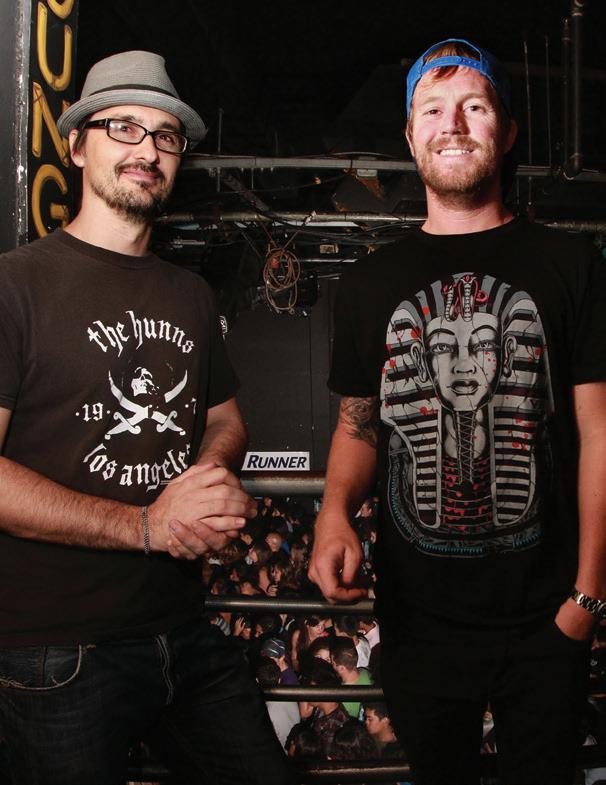
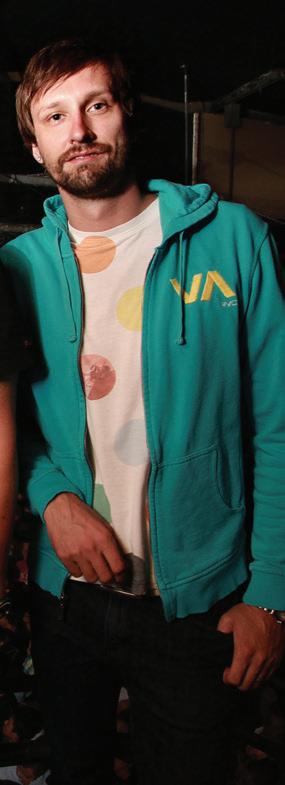
by
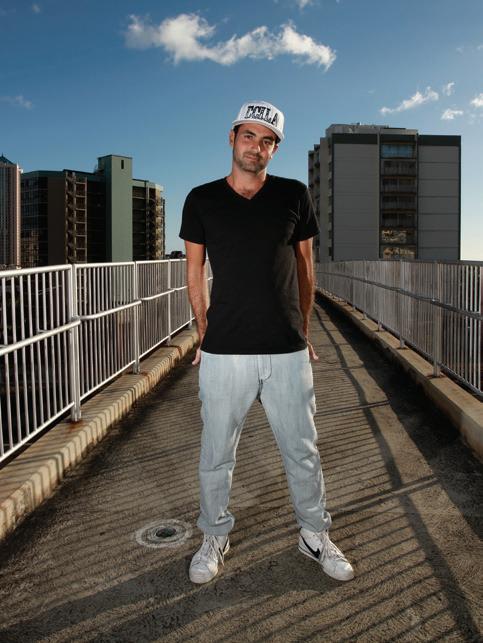
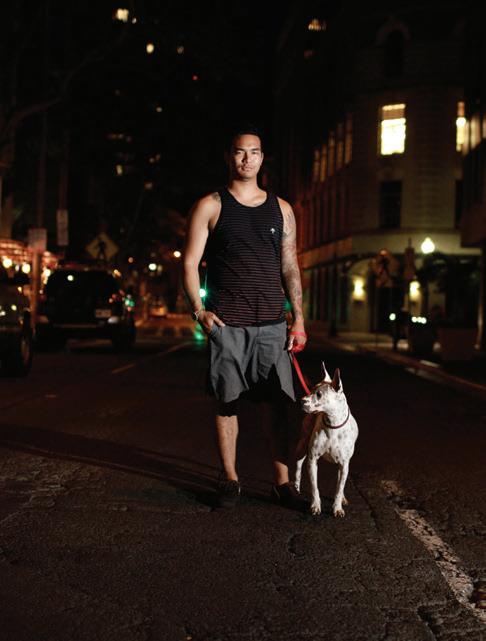

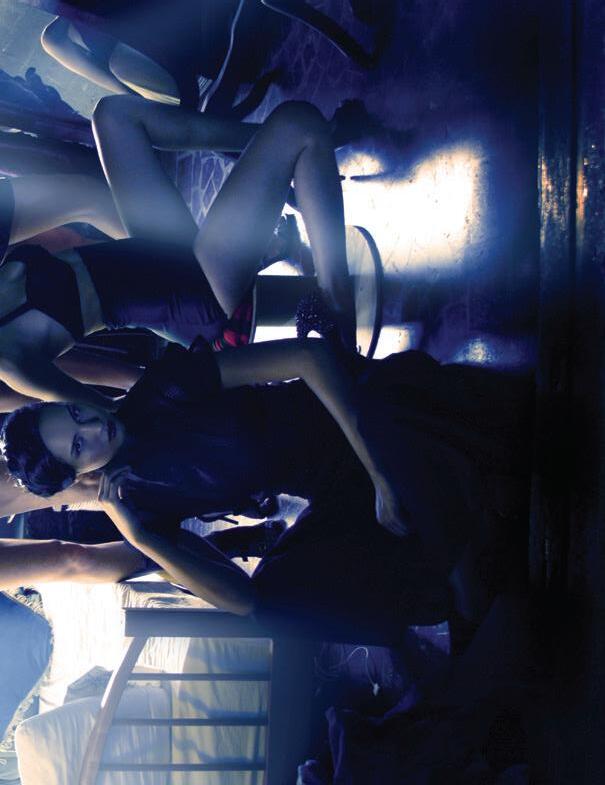
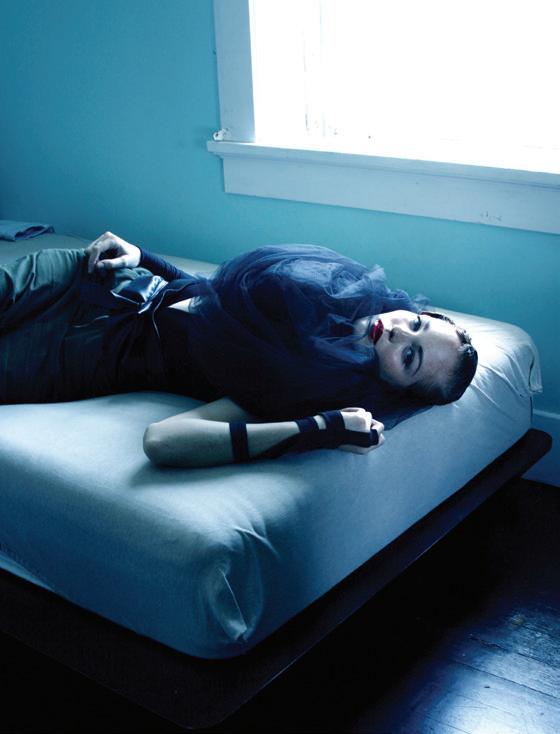
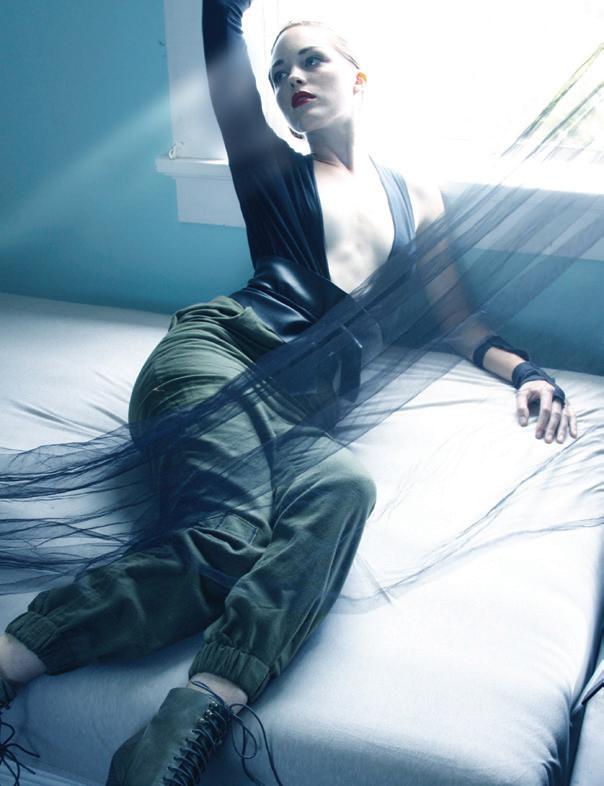
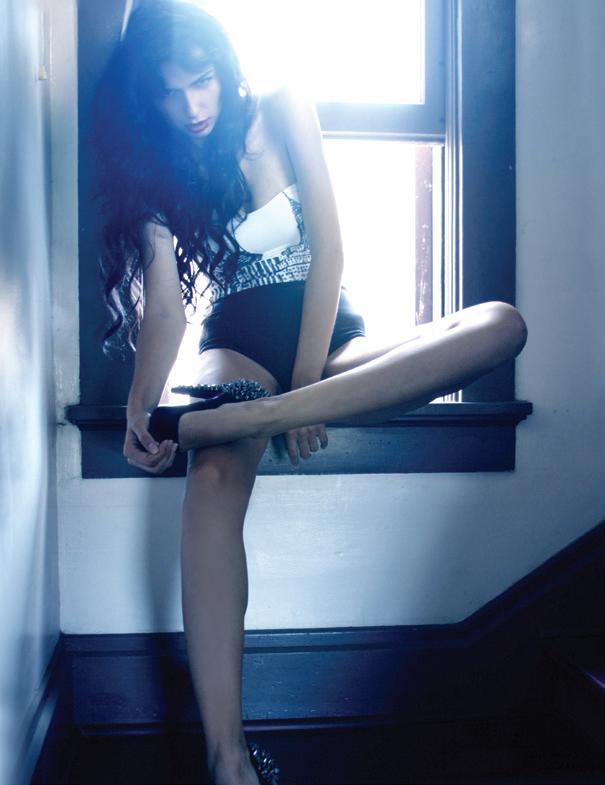

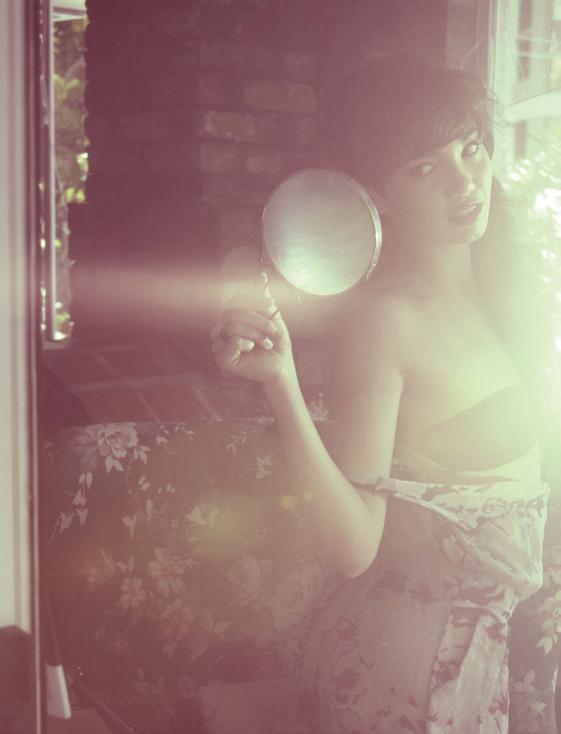

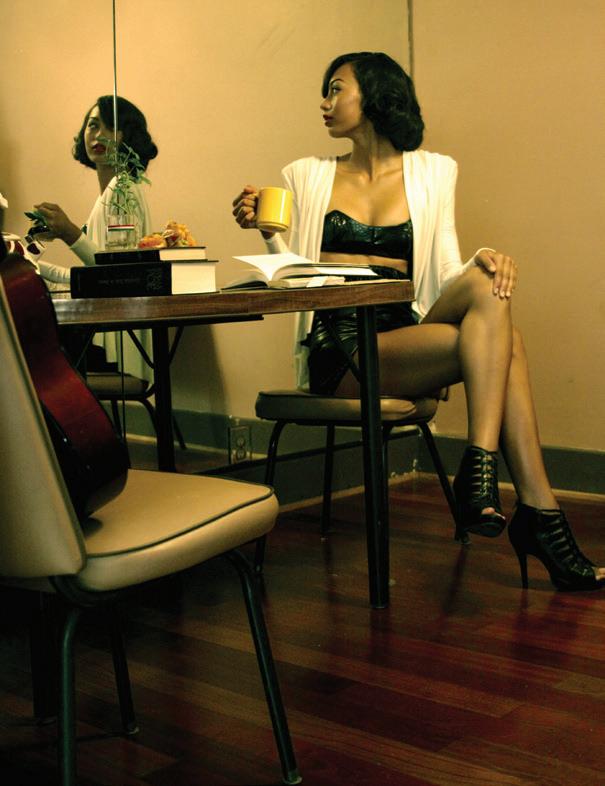
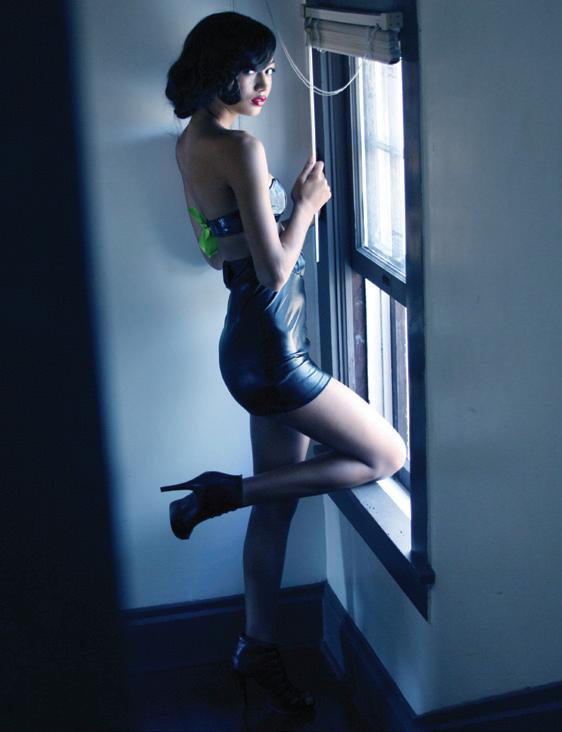
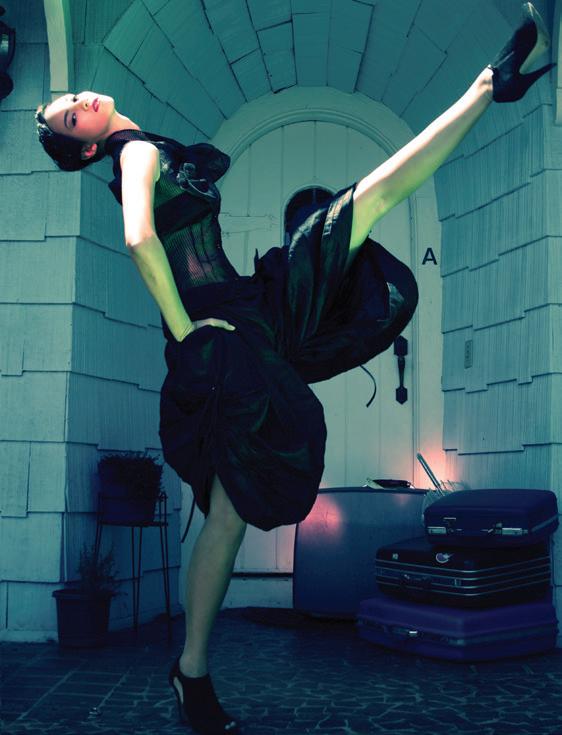
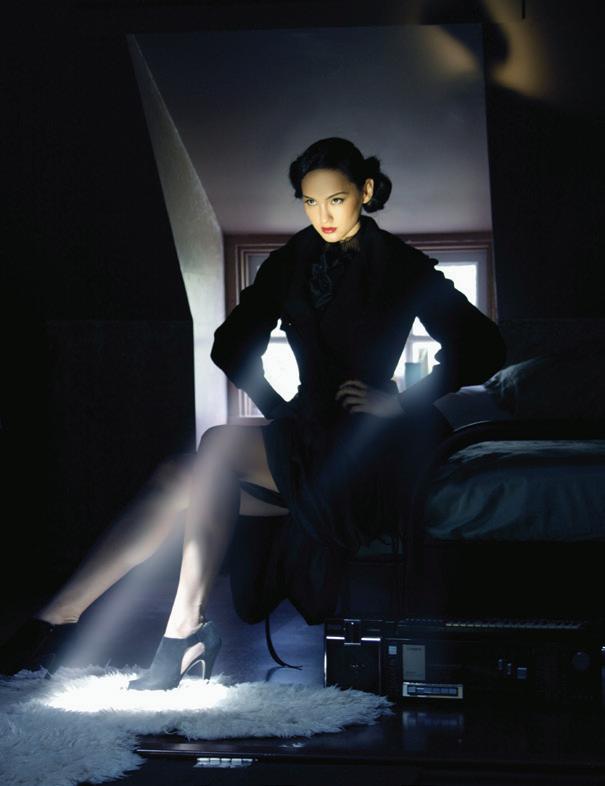
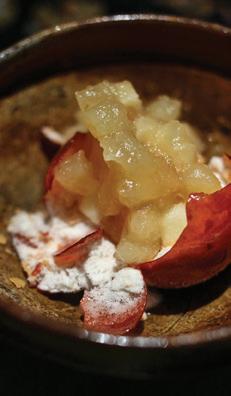
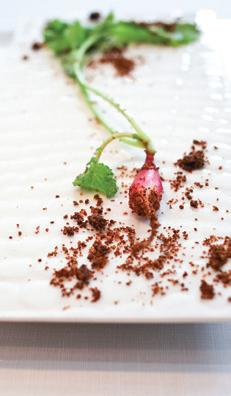
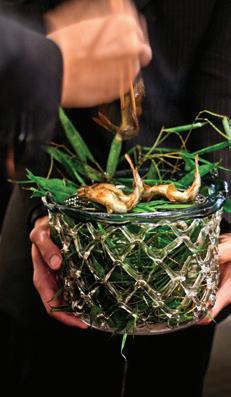
 Text by Lisa Yamada
Text by Lisa Yamada

Nail art in Japan has been revolutionized to a whole new level, moving past traditional mani-pedi’s into the realm of rhinestones, feathers and Hello Kitty. We’ve seen it on all the famous Japanese pop stars, most notably Koda Kumi, the singer/songwriter and reigning “Nail Queen” since 2006. (They actually have awards for this stuff!) In everyday life, women on average get their nails done every two to three weeks to coordinate with the season, an event, or just for a change. Japan has been notoriously famous for its detail and craziness and here we talk with Atsuko Kamoshita, owner of Santie nail salon in Asagaya.
FLUX: What kind of nail art is most popular in Japan right now?
Atsuko Kamoshita: Definitely Gels. It has a glossy look to it that lasts longer,

which women prefer. Gels can be colored, have designs, glitter, and of course have all the accessories. The design really depends on the season. For instance, in March pink nails with Sakura designs, crystals and, other decorations are very popular.
FLUX: How long does it take to do a whole set of fabulous nails?
AK: It takes about three to four hours depending on the base. The base usually takes one to two hours, and the rest is up to what the customer wants.
FLUX: How much do these crazy nails cost?
AK: It really depends, but I’ve had customers spend up to 40000 yen (roughly about US$440).

With everyone on the run at every hour, what’s more convenient than to buy things with a simple press of a button? Perhaps due to the low vandalism rate and high population density, jidouhanbaikis, or vending machines, can be found everywhere in Tokyo. There’s an estimated one vending machine for every 22 people. The vending machines sell everything from soft drinks, snacks, ice cream, disposable cameras, eggs, neckties, vegetables, condoms, ready-made ramen, and even pornography and used underwear. Due to its popularity, bars even began popping up near to the vending machines that dispensed alcoholic beverages. People could take their chilled drinks and relax and socialize as if in a real bar.
Walking down the dark basement steps, the black lights, screams and dark music remind you of an exciting attraction at Universal Studios. As soon as you walk to the end of a hall, women dressed in police outfits handcuff you and escort you to something akin to a prison cell or dungeon. (You’ve actually arrived at your table for the evening.) Welcome to The Lock Up. This restaurant and bar is one of the many themed restaurants in Tokyo, which offer a highly unusual type of entertainment and dining. Its theme: haunted prison. They serve many experimental drinks and unusual dishes with a slight mad scientist concept. One interesting dish is the Russian Roulette Cream Puffs, where one unfortunate guest out of six will become the victim of a deadly hot saucefilled dessert. (SPOILER ALERT!) All at once the lights go out, metal music starts playing, the black lights start flickering and sirens go off, warning everyone of an escaped prisoner. A “prisoner” goes into every room scaring dining patrons. It’s a frightfully good time.
from the bustling, burgeoning Hong Kong.
Correspondent Elmer Cagape open market: HONG KONG

Which country is the best placed to ride out the global recession? IMD business school in Lausanne, Switzerland asked that question when publishing their report of the world’s most competitive countries. Hong Kong took the number two spot, sustaining its role as the financial center for the Asia Pacific region.The United States ranked first, for the 16th consecutive year, despite the shaky economy, but Asian economies are quickly catching up. “Countries at the top of this year’s ranking are better prepared to adapt to the current turbulent [economic] times,” says Stephane Garelli, director of the IMD’s World Competitiveness Center, on Bloomberg.com.
“The business communities don’t fear change, and the governments should be able to enact reforms quickly.” The study ranked 57 of the world’s leading economies based on four categories: economy, government efficiency, business efficiency and infrastructure.
With a lobby 1,600 feet above the cacophony of Hong Kong city, the new Ritz-Carlton Hong Kong will the highest hotel in the world. Opening in December, the hotel sits atop the International Commerce Center (ICC), soaring from the 102nd floor to the 118th floor. An observation deck on the 100th floor will offer 360-degree views of Victoria Harbor, Hong Kong Island and the New Territories. Also located on the observation deck is a tourist information center, offering advanced telescopes and audio-visual guided tours in four languages. The skyscraper will become the fourth tallest building in the world, after Dubai’s Burj Khalifa, the Taipei 101 tower and the Shanghai World Financial Center.
“Every year, Hong Kong receives close to 30 million visitors, many of whom are eager to enjoy our spectacular harbor views from various vantage points int he city,” says James Tien, chairman of the Hong Kong Tourism Board. “As the tallest building and newest landmark in Hong Kong, the opening of the ICC will make Hong Kong’s already famous skyline even more stunning.”

Larry Gagosian, the ravenous New-York based art dealer, is speedily creating a global empire of contemporary art galleries, this time expanding his reach to Hong Kong. Officials at the Gagosian say they are actively looking for gallery space in Hong Kong, where Gagosian only maintains an office. This opening will bring the total number of Gagosian galleries to 10, including a space in Paris that will open at the end of this year. Currently there are three galleries in New York, one in Beverly Hills, two in London, one in Rome and one in Athens.
Gagsion is widely considered to be

one of the most influential players in the art world, and one of the wealthiest. The talents his galleries represent include Richard Prince, Jeff Koons and Damien Hirst, all of whose portfolios top seven, and even eight figures. As prolific as his galleries have become, Gagosian remains close-mouthed about his endeavors and has not spoken to anyone profiling him for nearly a decade. This comes perhaps as a result of a $4 million settlement he paid in 2003 after federal prosecutors accused him and three partners of failing to pay taxes on the sale of 58 pieces of art.
Even in these tough economic times, solidarity and morality are proving to be more important than money as the city of Los Angeles formally declares that it would boycott all dealings with the state of Arizona over its new immigration law. In what is being hailed as the broadest and
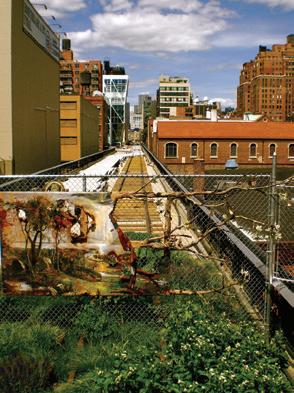

Summer road trips have always been a favorite pastime of Los Angeles residents vacationing to Las Vegas. Angelenos, however, may soon have to rethink their methods of transportation for their vacations. California lawmakers recently passed a “gas tax swap,” which would introduce a 17-cent tax on each gallon of gas sold to consumers in order to raise funds to combat the $41 billion budget deficit in California. Gas prices are usually raised by around 20 cents every summer to capitalize on transcontinental car trips, making the additional gas
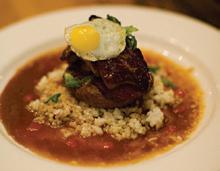
Summer road trips have always been a favorite pastime of Los Angeles residents vacationing to Las Vegas. Angelenos, however, may soon have to rethink their methods of transportation for their vacations. California lawmakers recently passed a “gas tax swap,” which would introduce a 17-cent tax on each gallon of gas sold to consumers in order to raise funds to combat the $41 billion budget deficit in California. Gas prices are usually raised by around 20 cents every summer to capitalize on transcontinental car trips, making the
Remember when Martin Luther King Jr. led nonviolent protests, when Malcolm X rallied for civil rights by any means necessary, when Black Panthers read the laws to cops in the street, when anti-war protesters and feminists set fire to the symbols that oppressed them? Remember when things just didn’t sit right and the youth got up and did something about it? I don’t remember it either, because I am of a generation whose perception is clouded by massive daily doses of media and technological distraction. Activism today is more digital than tangible. And with more access to information and organization via the Internet, what will the masses do when they want a change? What will we do when we realize the myths we were raised on no longer serve us? I tracked down fellow Brooklynite and Zeitgeist film creator Peter Joseph, whose 2007 documentary became the most watched video on the Web. Joseph, whose films address conspiracy theories in regards to religion, the government and capitalism, offered his insight on new activism and his provocative ideas on the impending revolution.
Correspondent Tiffany Iwalani Hervey open market: NEW YORK CITYAs a young, broke New York City resident, I have officially become a specialist on all things free/inexpensive and fun. It is not easy to socialize and indulge in culture if you don’t have dollars. As someone who has always lived in popular vacation destinations it has also been my mission to find entertainment sans tourist swarms. Here are my finds for the best freebies in New York:
Museum at the Fashion Institute of Technology: Free National Museum of the American Indian: Free Metropolitan Museum of Art: Suggested donation, give what you can.
American Museum of Natural History (MOMA): Suggested donation, but free every Friday from 4-8 pm.
FLUX: Activists throughout history have tried everything from non-violent protests to pipe bombs to fight for change. What are your tools for activism?
PJ: Our model is based on Ghandi and Martin Luther King Jr. True change comes from peaceful non-cooperation with those institutions that are inhibiting progress. It is the only thing that has ever worked.
FLUX: Is there hope for revolution or at least a re-evaluation of how we operate as a capitalist society?
PJ: The whole system must go. Yes, most people are fully indoctrinated and are too conditioned to see beyond their established environment and values. I think the “revolution” will be one of global proportions. However, it will not be like anything that has occurred before. I really do not know the path, but I see it as inevitable. Either the world learns to work together and share resources or we will destroy ourselves.
FLUX: What can individuals start doing to affect change now while still protecting their family and basic needs?
The High Line is essentially a public park 30 feet in the air, converted from a massive infrastructure constructed in the 1930s to lift dangerous freight trains off Manhattan’s streets. No trains have run on the High Line since 1980 so the City recently renovated the elevated structure into a public park, which spans from the Meatpacking District on the West Side all the way to 34th Street.
The Waterfront, in DUMBO (acronym for Down Under the Manhattan Bridge Overpass), Brooklyn, is snuggled in between the Manhattan and Brooklyn bridges. It’s a postcard view sans tourists. Stroll west through a block of art galleries, bookstores, and storefronts selling fantastic treats.
The Brooklyn Botanical Garden is free on Tuesdays and the New York Botanical Garden in the Bronx is free on Wednesdays.
PJ: Educate yourself. Society is contained and held together by parallel values. Our current values need to change. For example, people need to stop supporting the selfish ideals perpetuated by industry. Our values are only helpful if they are supported by the external world. This is a powerful issue to consider. Each one of us is faced with the emotionally complex reality of being “wrong” all the time. We have to accept this and welcome change. It is also important to see government, as we know it, for what it really is: a self-preserving institution, where the public is always second to state interests. While I suggest people do their best to influence this beast, it should be known that the focus of government is to preserve existing systems, not to change them. This is why The Zeitgeist Movement is a “social” movement, not a political one. Politics is an outdated method of social organization. We should be working to elect ideas, not people.
To see the full interview go to: www.FLUXhawaii.com.
The Zeitgeist Movement: www.thezeitgeistmovement.com
Photos by

The Lu Lu’s’ chefs talk hollandaise sauce, cooking naked, and Japanese tourists’ affections towards the loco moco. -
For decades, college students and partying enthusiasts worldwide have been researching the same critical question: What makes a good bar? Is it cheap drink specials? Or live music? Ono pupus? Cute bartenders?
For me, one thing – and one thing alone – can set a bar above all others: shuffleboard. There is just something magical about gliding metal disks colliding into each other as they drift across a salty surface. Needless to say, I was pretty stoked when I first noticed the shuffleboard table adjacent to the entrance in Lu Lu’s Waikīkī. But of course, Lu Lu’s is more than just shuffleboard. The eatery is more than just a bar, too. Truly embracing the “something-for-everybody” mentality, it is more of a breakfast joint/ music venue/nightclub/sports bar/family
restaurant/late-night munchie stop, all tied together with an Endless Summer surf ambiance and panoramic views of Diamond Head and Waikīkī Beach. Since opening in 2004, Lu Lu’s’ killer grinds, cold beer, friendly staff, nightly live music, and mostly under-30 management team continue to help the establishment hold its own against other Waikīkī restaurant operations.
The kitchen at Lu Lu’s is filled with ambitious young chefs eager to make their mark on the Waikīkī culinary scene. The menu is just the right blend of familiar fare and crowd-pleasing cuisine that keeps everyone coming back. FLUX sat down with Executive Chef Jordan Salvador and Sous Chef Rance Shimizu to get the dish on the men behind the Lu Lu’s eats.
FLUX : What are your favorite things to cook when you are not at work?
Jordan Salvador: I don’t really cook outside of work. There’s a lot of take-out and fast food when I am not here.
R ANCE S HIMIZU : A lot of times, we are cooking here so much that when you get home, it’s the last thing you want to do. But if I do cook, it’s a lot of Asian or local cuisine. Growing up in Hawai‘i, you experience so many different foods from different ethnicities. It makes you want to figure out how to replicate them or infuse different foods together.
FLUX : Did you guys have any part in creating the current Lu Lu’s menu?
JS: It was here when we got here, though
we are slowly making changes to it.
RS : In the next menu expansion, we have three or four new items that we have created, like the fresh island fish tacos – blackened mahi, tropical fruit salsa, black beans and chipotle aioli.
FLUX : You’re making me hungry! Lu Lu’s serves food until 2 a.m. Do you guys get a lot of late nighters in here?
RS : Yeah, our restaurant is a hotspot for the late night crowd, especially when concerts are held at the Waikīkī Shell. [The concert goers] all come up for food and drinks to cap off the night. It’s all of the good-withalcohol food.
FLUX : As under-30 chefs on the Waikīkī restaurant scene, you guys are up against some tough competition. Do you feel like your age gives you any advantages?
RS : Certainly. We can pick things up quicker. And we are more open to learning because we are still young. We learn as we go.
FLUX : Any disadvantages?
JS : Because we are so young, we aren’t always taken seriously.
FLUX : As chefs, are you more critical of
other restaurants’ food?
JS : Not so much. I know what they go through, so I understand.
FLUX : Ahh. You’re sympathetic. The type that would never send a dish back to the kitchen?
RS : Ya, unless something was really bad with it. We’ve watched Waiting enough to know not to do that.
FLUX : What are the most popular menu items at Lu Lu’s?
JS : The stuffed french toast for breakfast.
RS : And the loco moco. We get a lot of Japanese tourists, and they have some sort of affection towards loco mocos.
FLUX : So you guys have eggs Benedict on the breakfast menu. Do you make your own hollandaise sauce?
JS : Oh yeah. We make it from scratch. These guys make it every morning, so they are pretty good at it.
FLUX : So your cooks are hollandaise masters?
RS : It takes a while to learn, but once you get the method down, you can make it pretty easily. The flavor is clearly different then when you use the just-add-water kind.
IF RANCE AND JORDAN WERE A FISH, THEY WOULD BE AHI.
“Ahi tuna’s versatilty allows it to be applied in many different cuisines. Here in Hawai‘i, raw or lightly seared is the way to go.”
FLUX : Do you guys have any particularly memorable moments at Lu Lu’s?
RS : I remember one day we got complemented on our B&B ahi Benedict from the host of Barefoot Contessa. That was a milestone for us.
FLUX : What is the secret to being awesome in the kitchen?
JS : Passion. And consistency.
RS : Yeah. Definitely passion. If you don’t like what you are doing, it will show in the food you make.
FLUX : Does it ever get really hot in the kitchen?
RS: Oh yeah. It is like Lu Lu’s weight-loss program, for sure.
FLUX : Would you cook naked if you could?
JS : If no one else was in there.
RS : You might get hurt in certain areas that you don’t want to. You’d have to watch out for grease splatters.
HONOLULU HOT TUNA:
Ingredients:
6 oz ahi tuna steak
Julienne Tomatoes
Cucumbers
Red Onions
1 tbsp soy sauce
1 tbsp sambal oelek
1 tsp sesame oil
1 tsp red wine vinegar
1 tsp sugar
Cajun spices
The Sauce:
2 tbsp Dijon mustard
1 tbsp dry mustard
1 tbsp soy sauce
Directions:
Cut ahi tuna steak against the grain. Coat the 6 oz ahi steak in Cajun seasoning. In a hot oiled pan, sear ahi for 5 to 10 seconds per side. In a mixing bowl, add 1 tbsp soy sauce, 1 tbsp sambal oelek, 1 tsp sesame oil, 1 tsp red wine vinegar and 1 tsp sugar. Whisk together, and then add it to the veggies. Serve ahi with veggies, and top off the dish with the sauce.
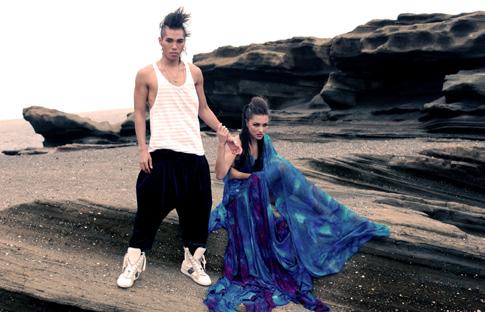
At the time of this writing, rumors – and rumors of rumors – of Wai‘anae fashion phenom and Project Runway hopeful, Andy South, showing at Lincoln Center for New York Fashion Week began making its way down the coconut wireless. Andy spotted sewing in a Chinatown studio working feverishly on a new collection! Tim Gunn in town to check on the young protégé?! Regardless of what happens at Lincoln Center, Andy is showing the world that Hawai‘i is much more than tank tops and flip-flops, with his strong, structural sophistication and exquisitely, inventive tailored wear. (Suspiciously) under lock and key by Lifetime Network, Andy took a moment to answer eight of FLUX’s most inquiring questions.
Tell me about the first garment you designed?
I started making Halloween costumes for fun in high school. The first garment I actually designed was a lavender prom dress where I used various fabrics that I put together in a patchwork.
Where did you learn to sew?
I started experimenting with outfits at home. My mother taught me some rudimentary skills of sewing, but from there I
quickly decided to pursue my formal training at Honolulu Community College’s fashion technology program.
Fashion is not the first thing that comes to mind when one thinks of Wai‘anae. What was it like growing up in Wai‘anae and being interested in fashion?
Wai‘anae has a really laid-back attitude. And while there are aspects of me that appreciate my local culture, I was usually that kid who was attracted to things that none of my peers found interesting. It was later on in my high school years that my affinities evolved into a passion for fashion.
What elements of Hawai‘i influence your pieces?
Hawaii has an incredible degree of cultures that coexist together, and every culture has its own story. I try to pull my inspiration from as many stories as I can.
What has been your most memorable Project Runway experience so far?
My most memorable PR moments would likely be those that I’ll have to refrain from sharing at the moment – best viewed on the show! But I definitely enjoyed times of genuine connection and downtime with
the other designers, like having Michael Drummond cut my hair in the bathroom.
If you could pick anyone to represent your line, who would it be?
Emma Watson.
What would you be most excited to see happen for Andy South?
I hope to be an anchor of design innovation in the fashion industry. To open my own flagship store. To have my creative accomplishments recognized by the Council of Fashion Designers of America and my peers, would also be a great honor and personal achievement.
What do you think is needed in Hawai‘i to foster a more thriving design and fashion scene?
More general support for both the art and fashion industry in Hawai‘i. Taking into account our isolated location, with a troubled economy, it’s very hard to survive as a business, let alone an artist. While, there have been several attempts at revival, the fashion scene and art scene are dying. What is lacking immediately is committed financial support for our young artists.

Buying locally and eating seasonally helps to preserve our connection to food and support the local economy. Here are some local Hawai‘i farmers we are delighted to support:
Evonuk Farm, Maui Cattle Company, Robb Farms, Twin Bridge Farms, Ho Farms, Paradise Flower Farms, Ali‘i Kula Lavender, Otsuji Farms, Kumulani Farm, Coca Farms, Kahanu Aina Farm, Rice Farms, Kanoa Enterprises, Ma‘o Organic Farms, Kumu Farms, Ono Organic Farms, Waipoli Hydroponic Greens and Anuhea Farm.
Liliko‘i grown in Kula, Maui

MALL
KAHALA MALL